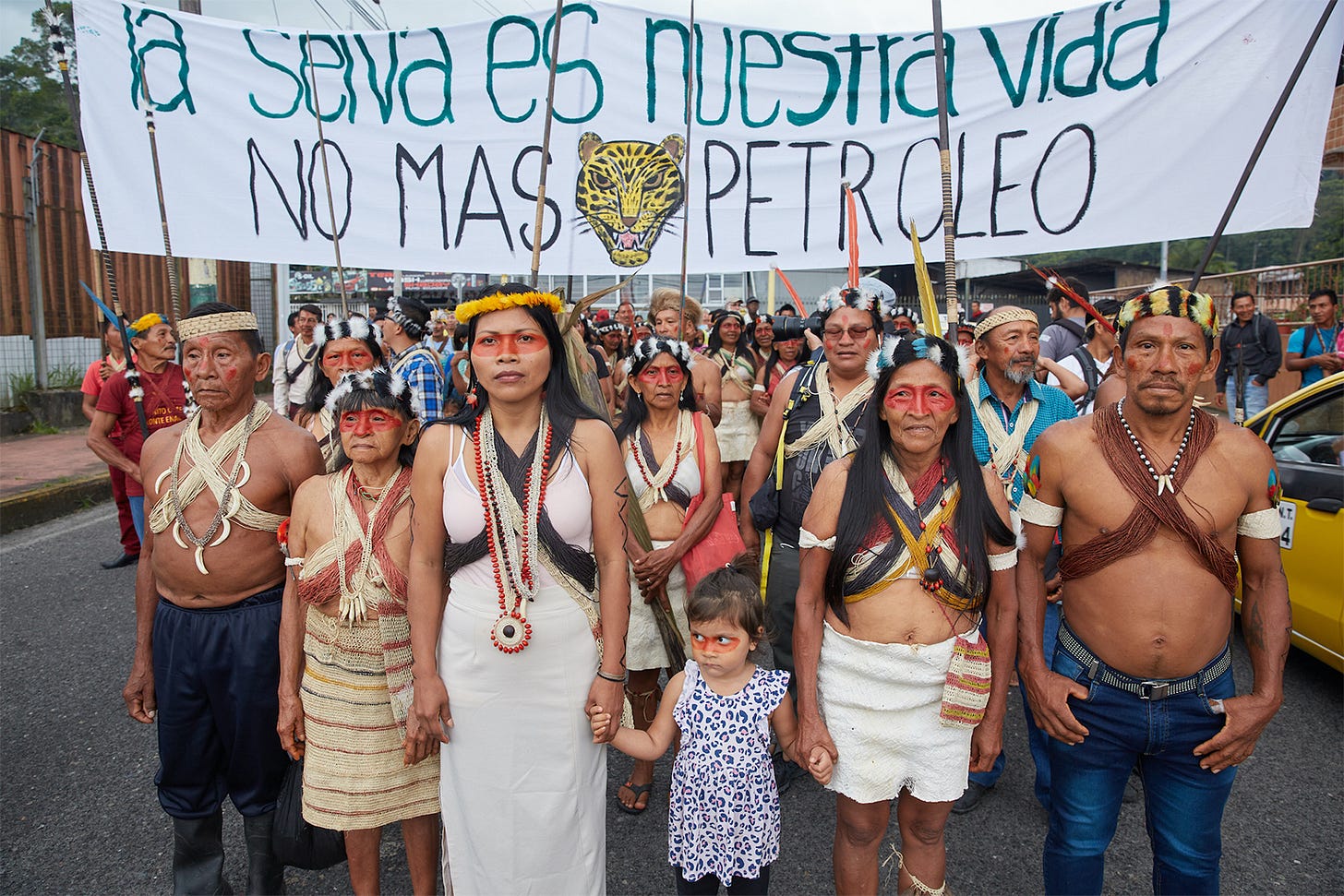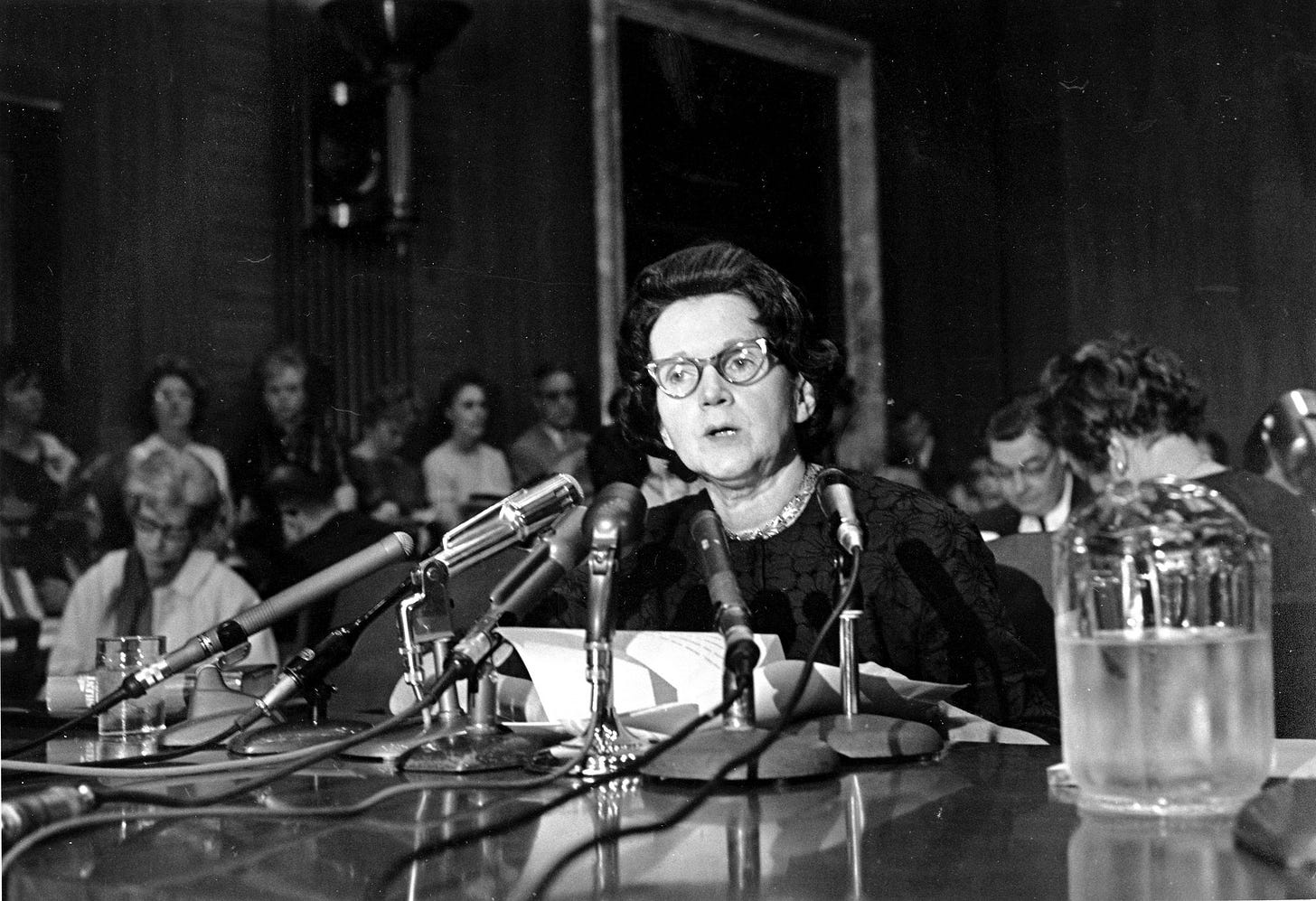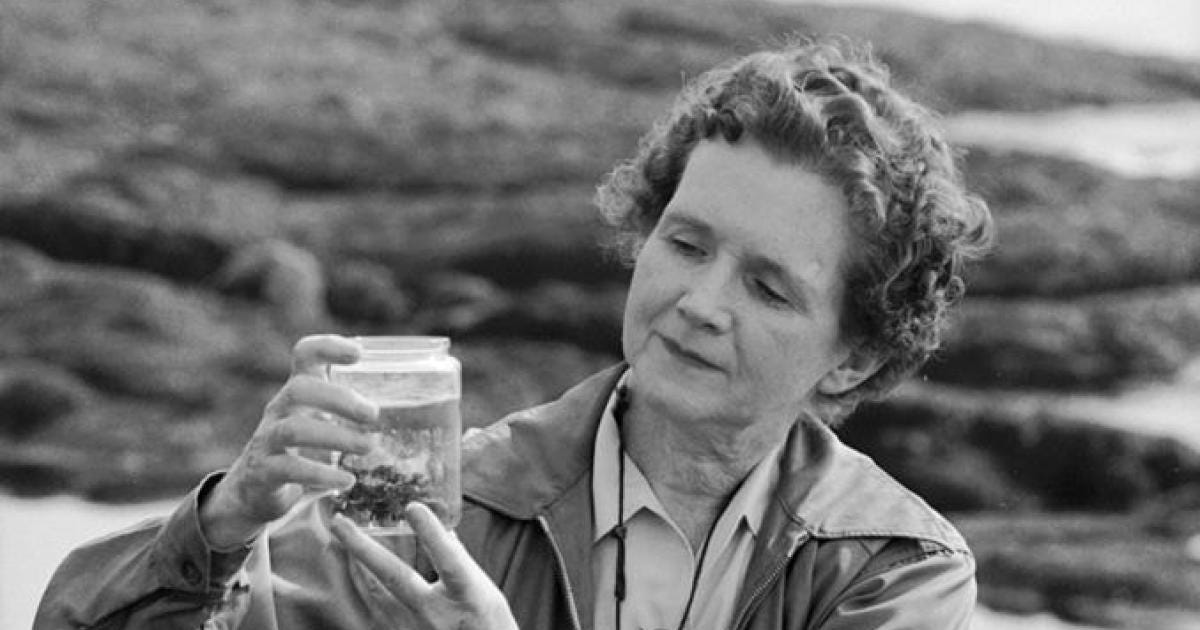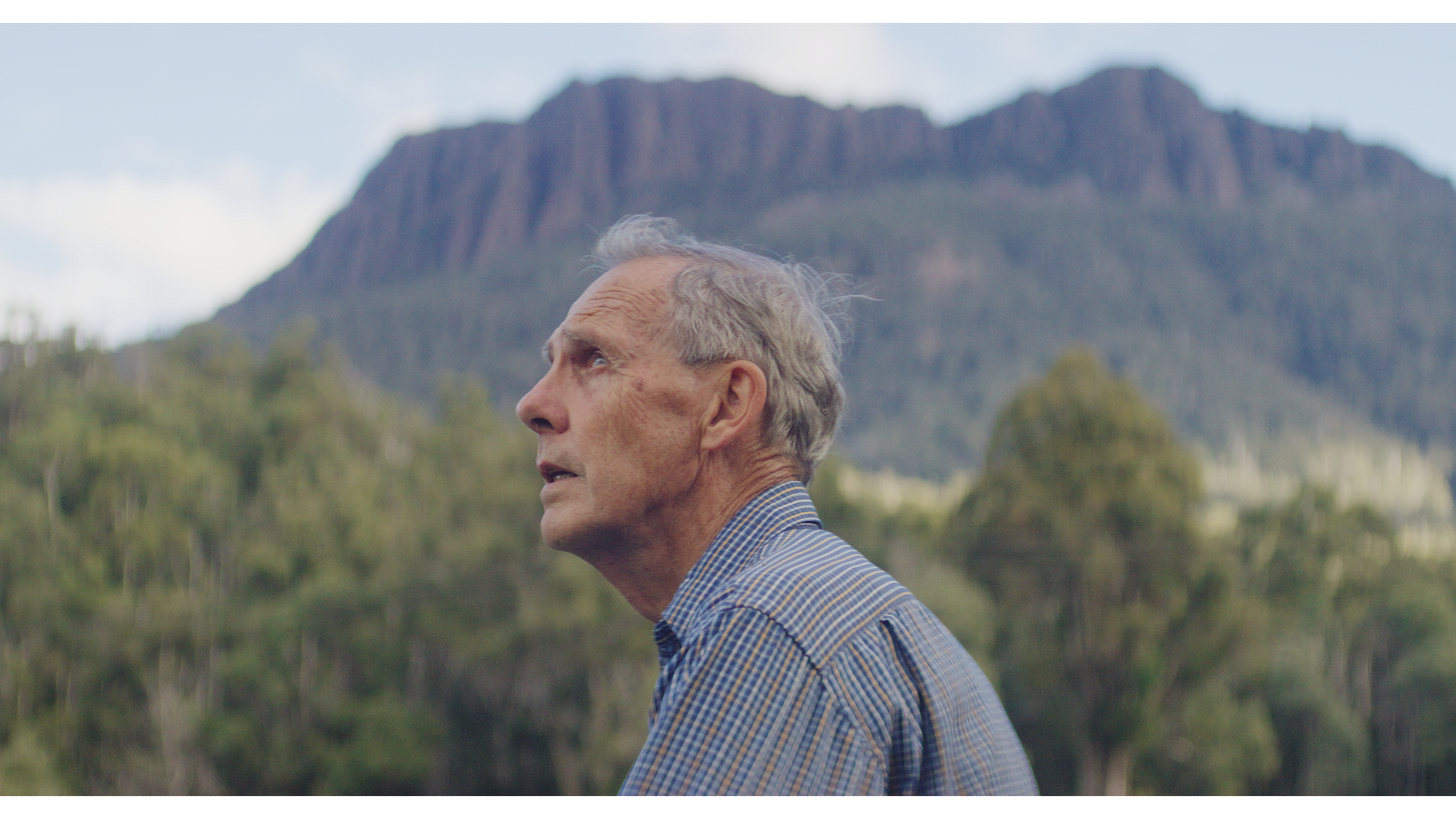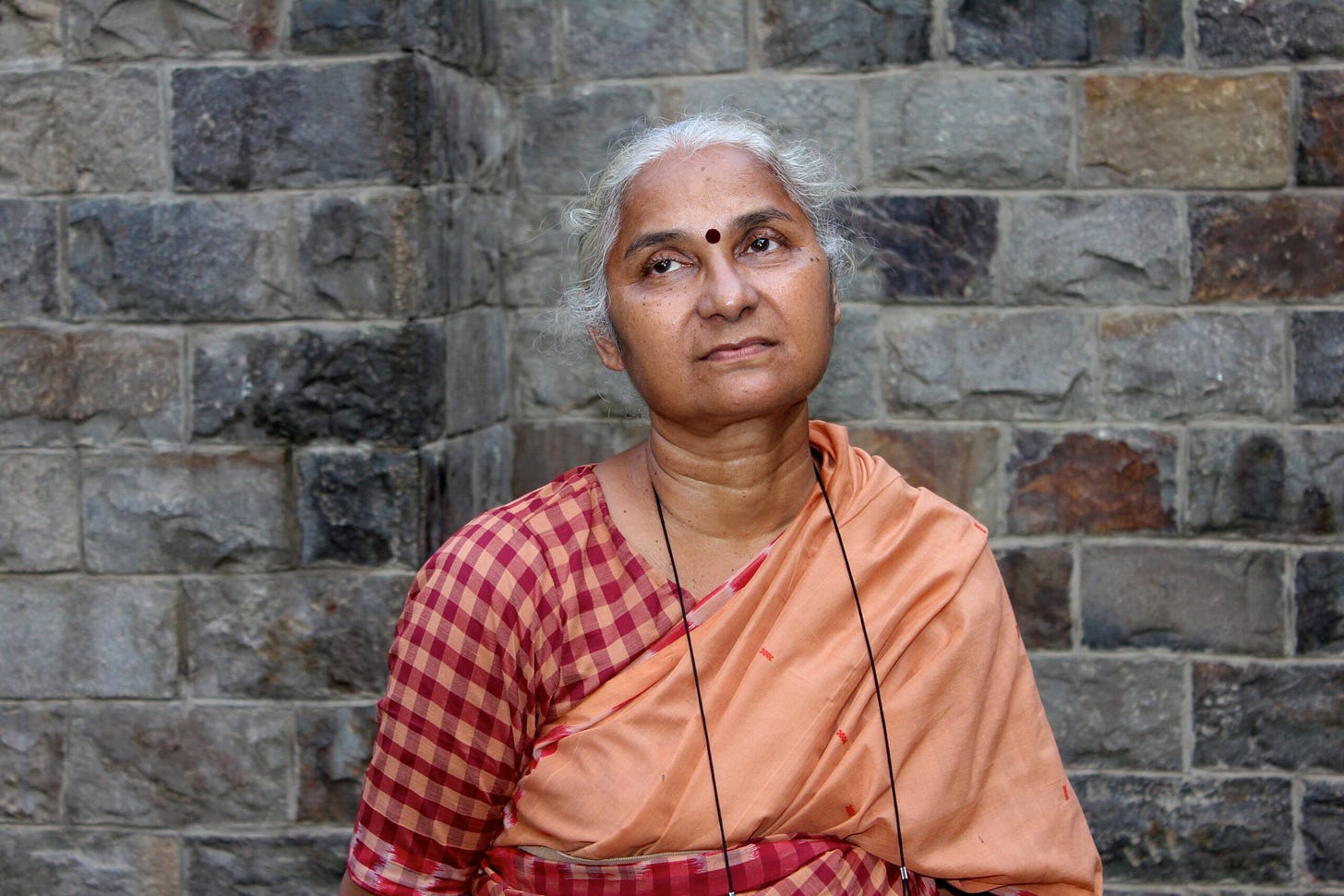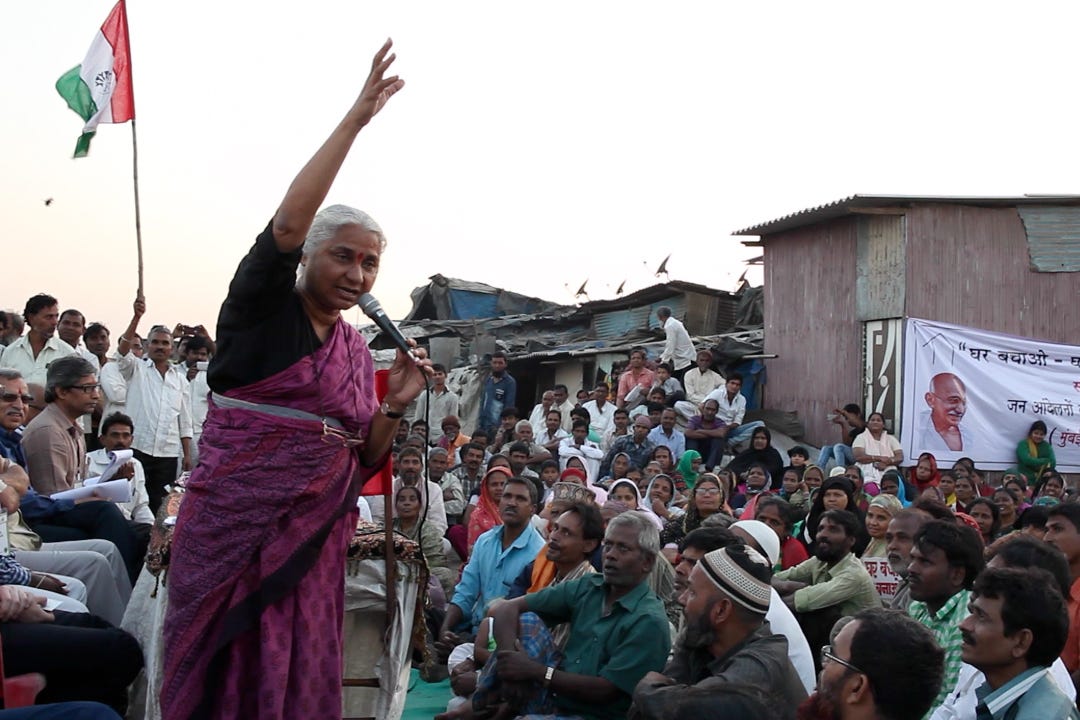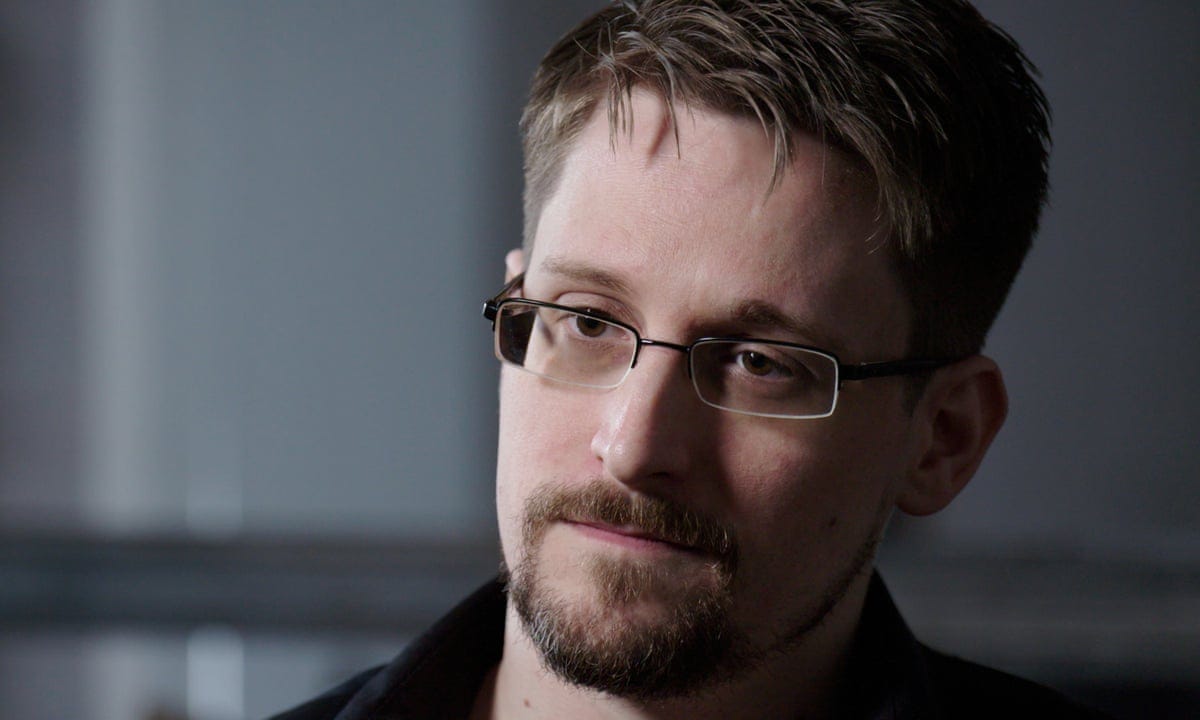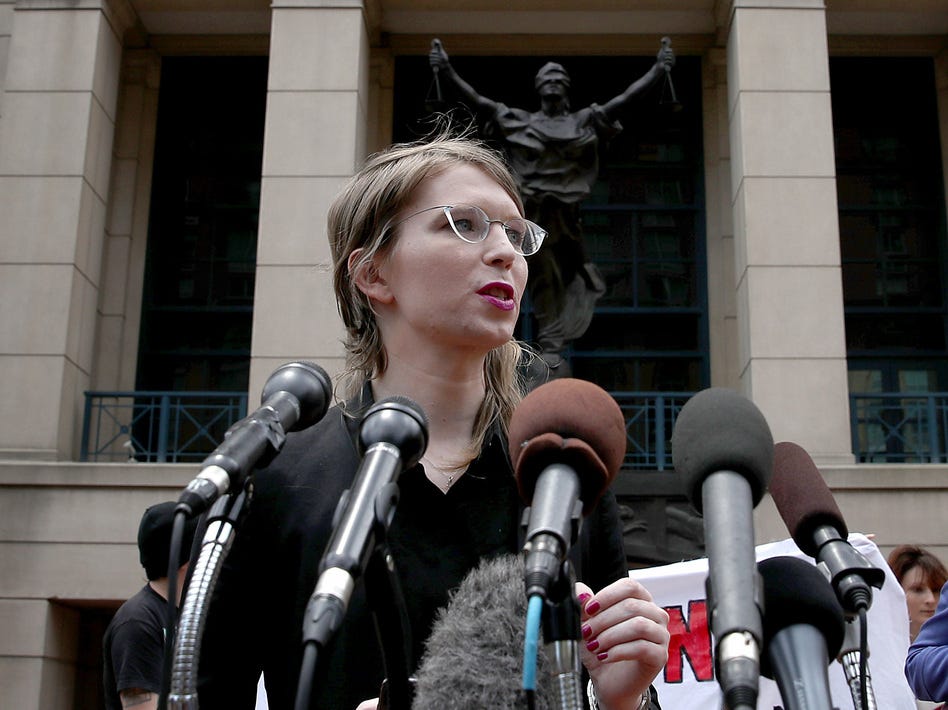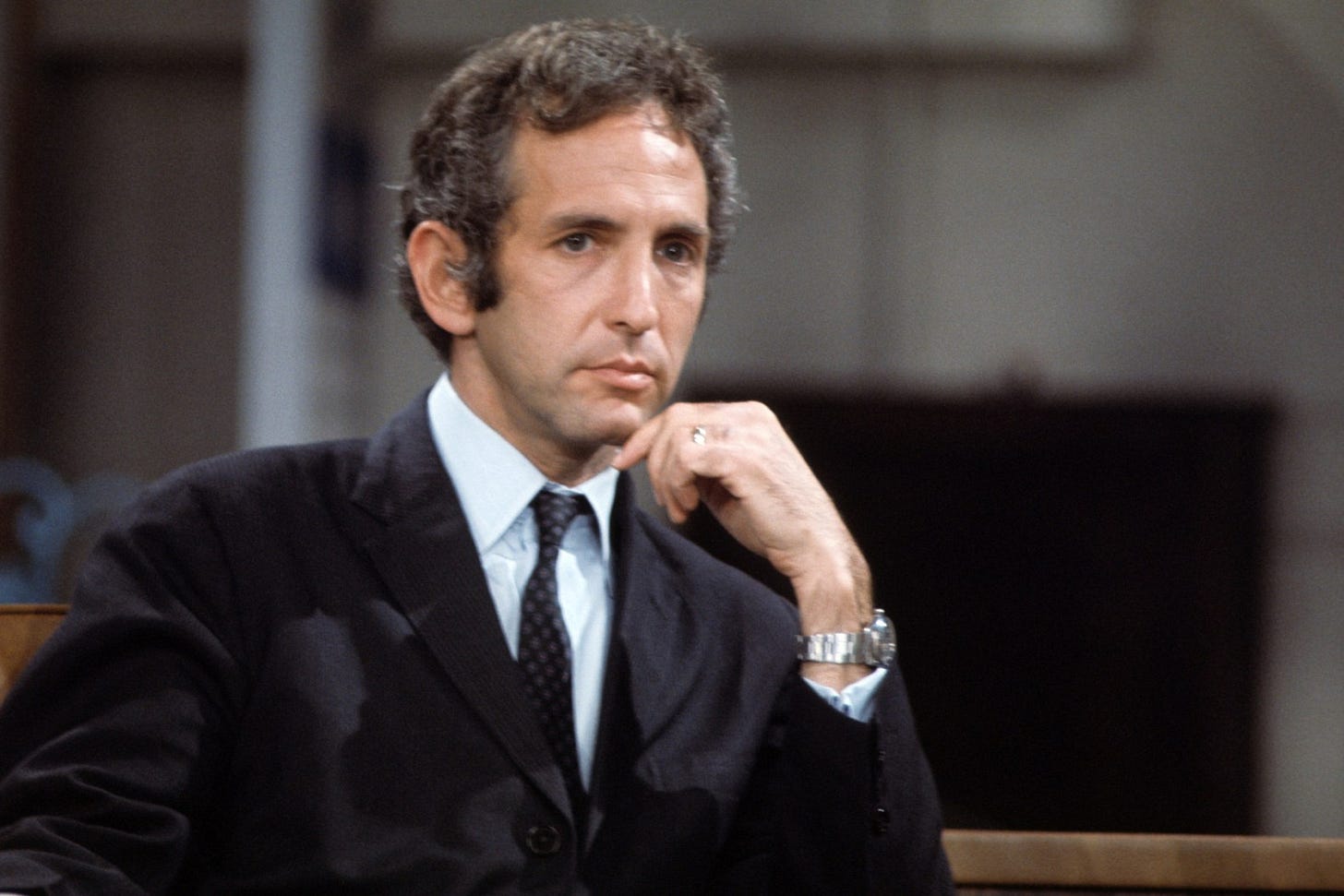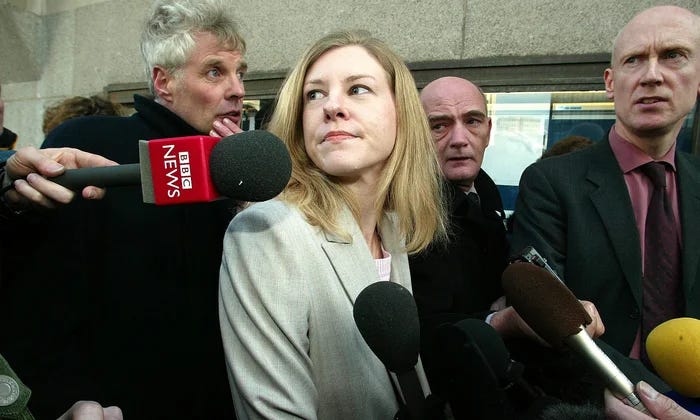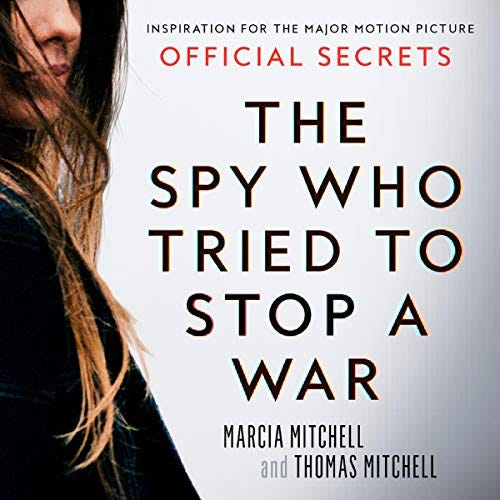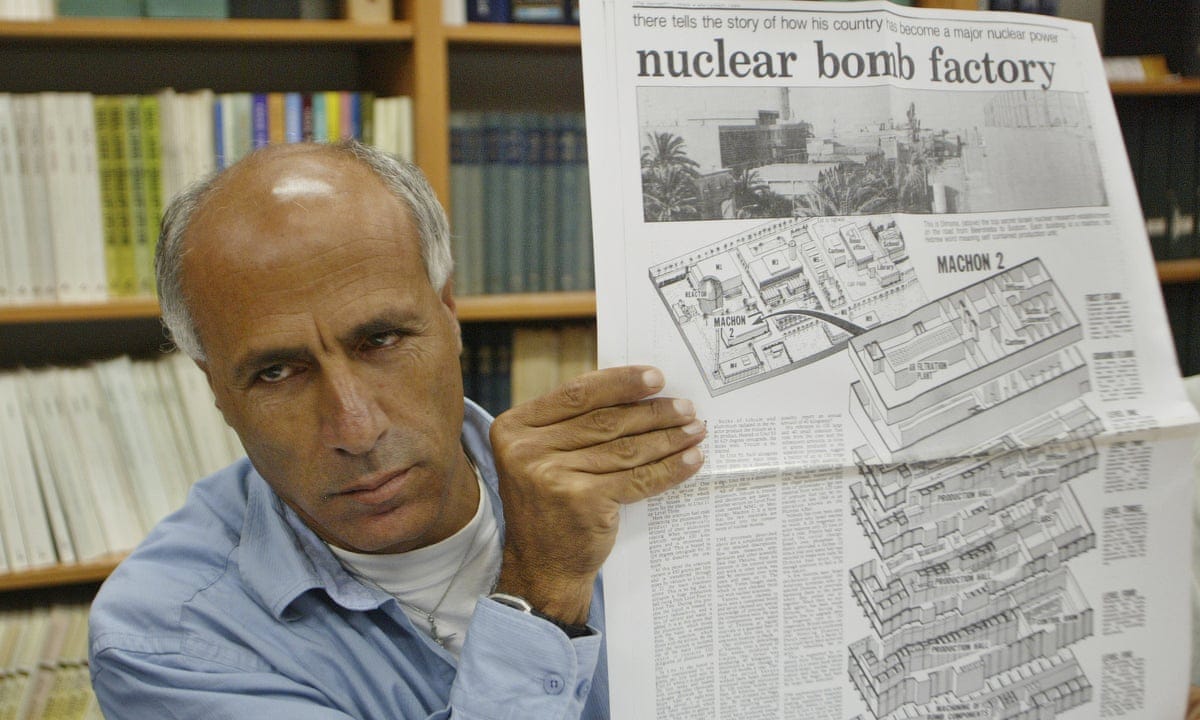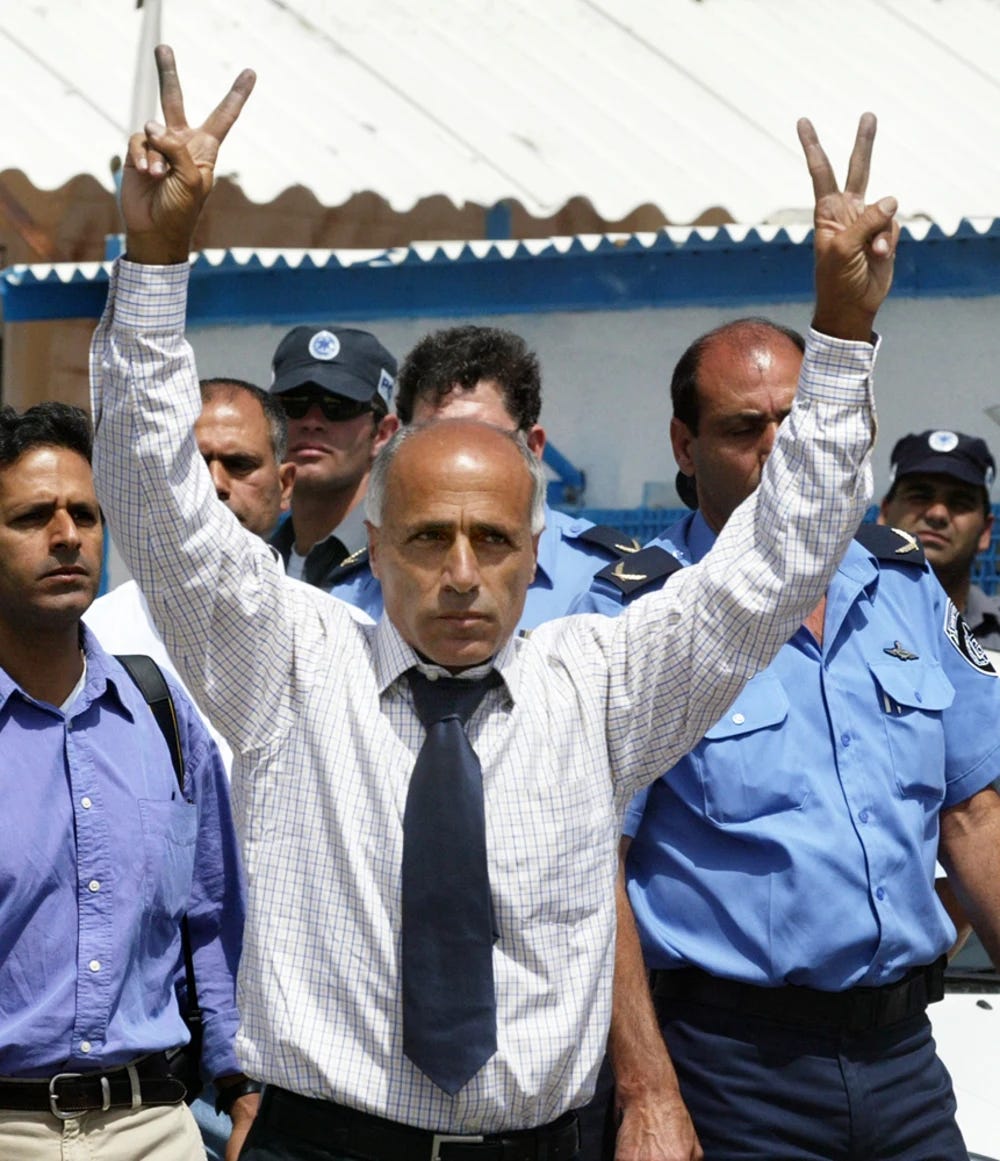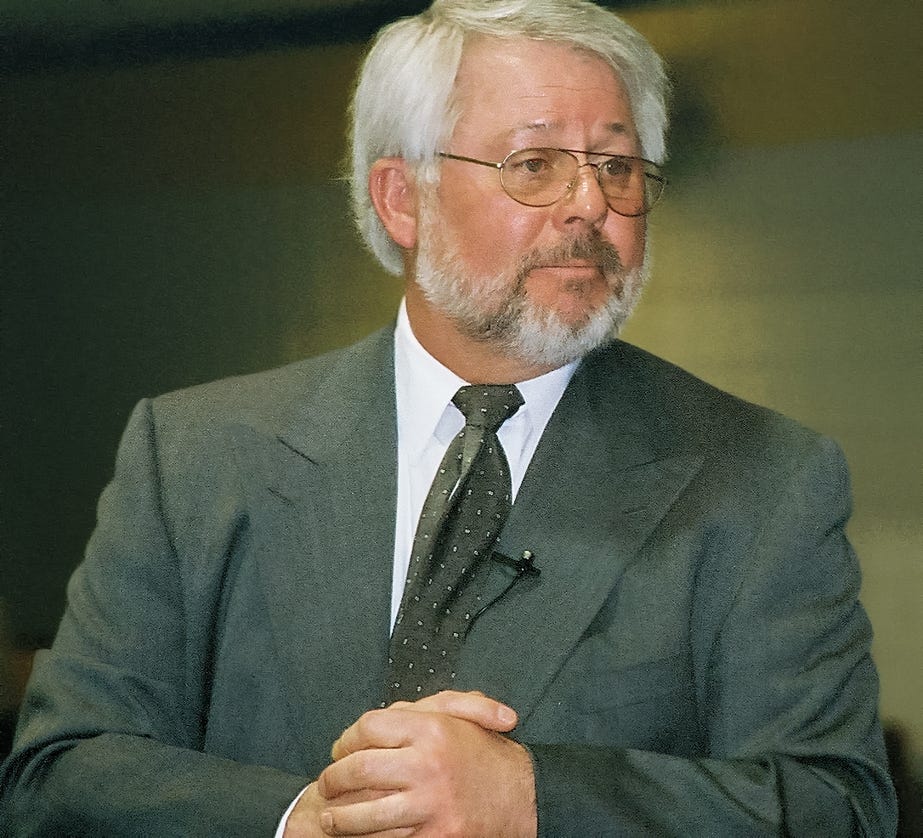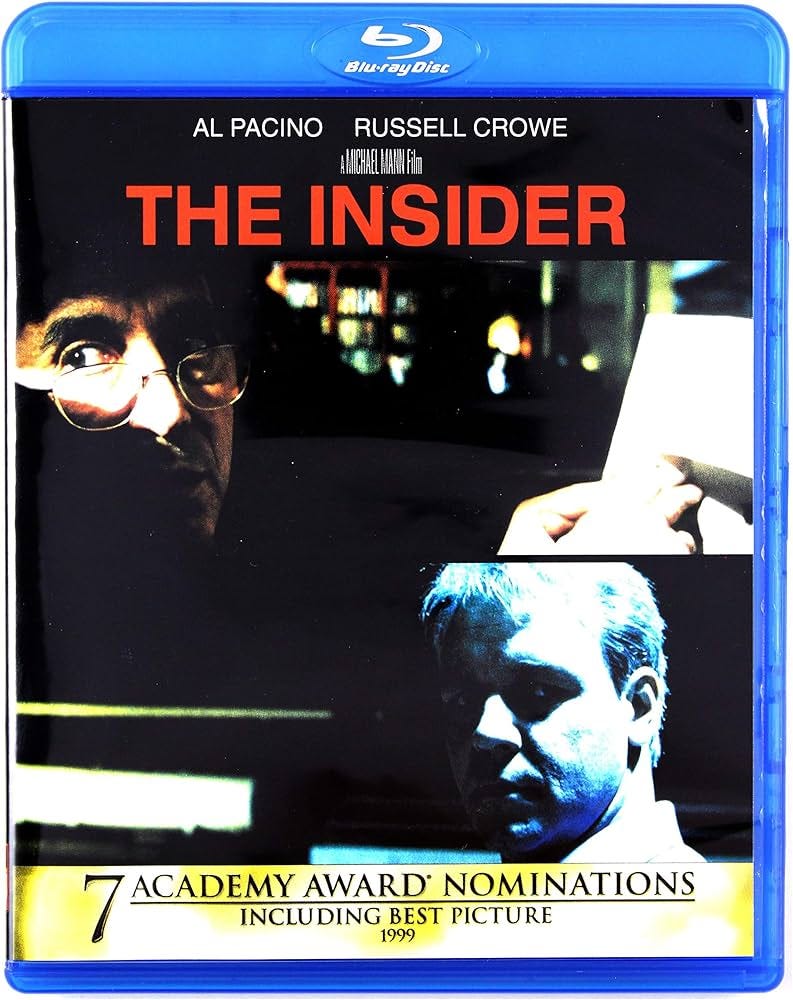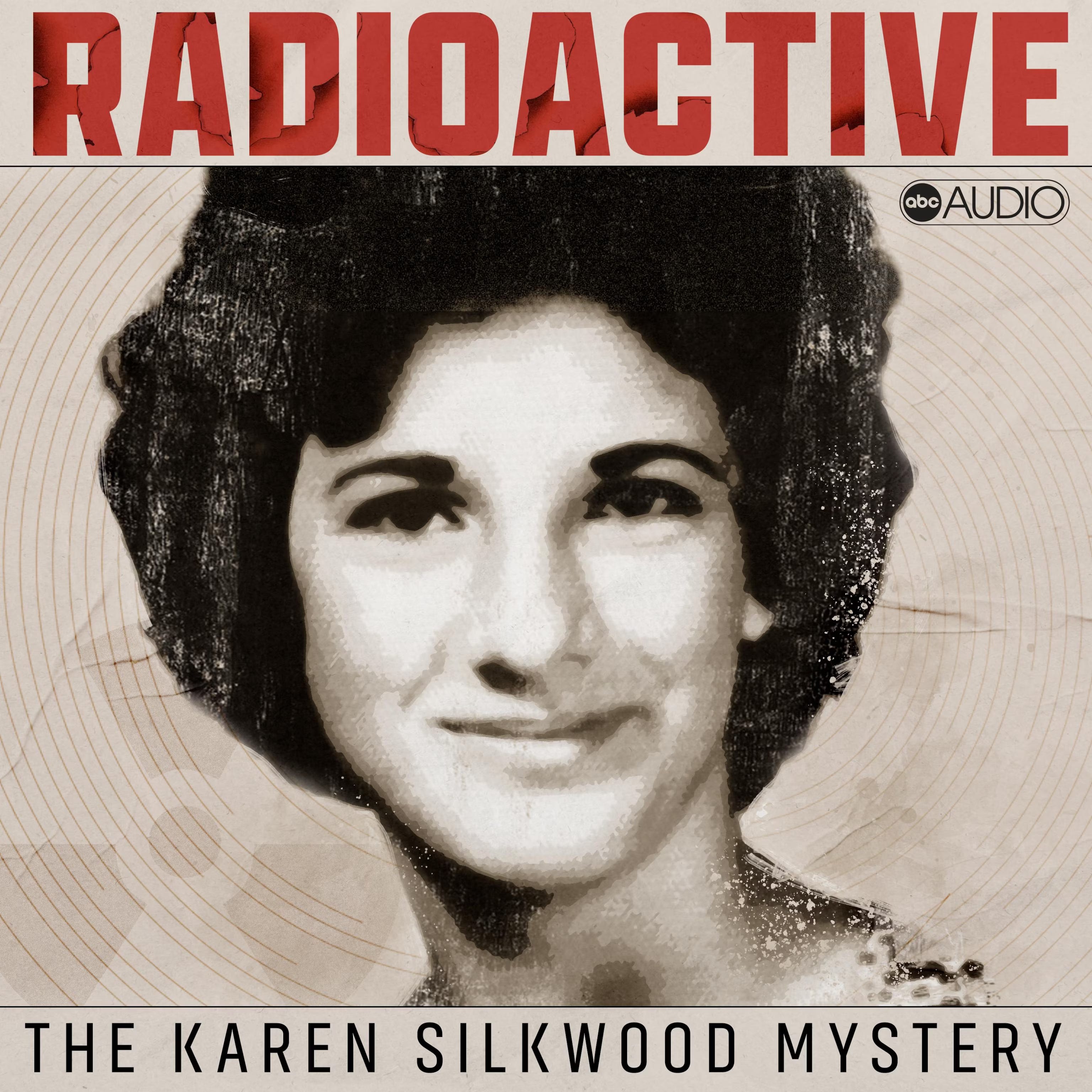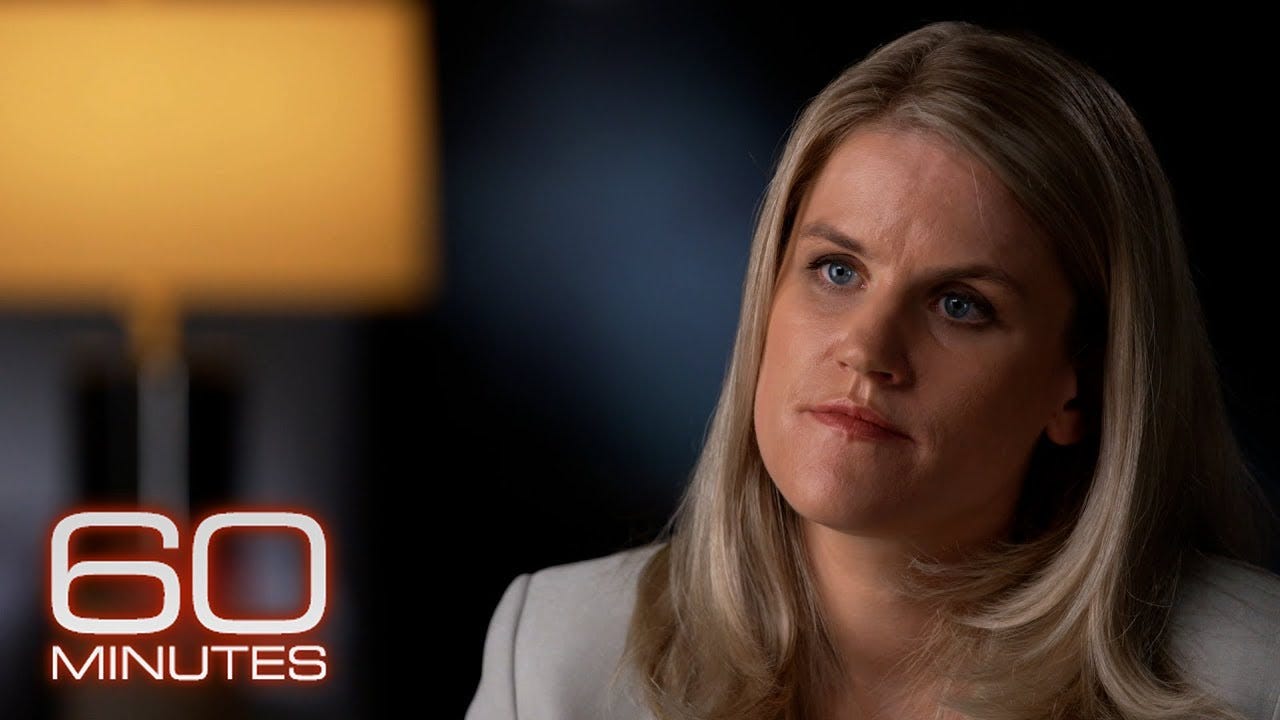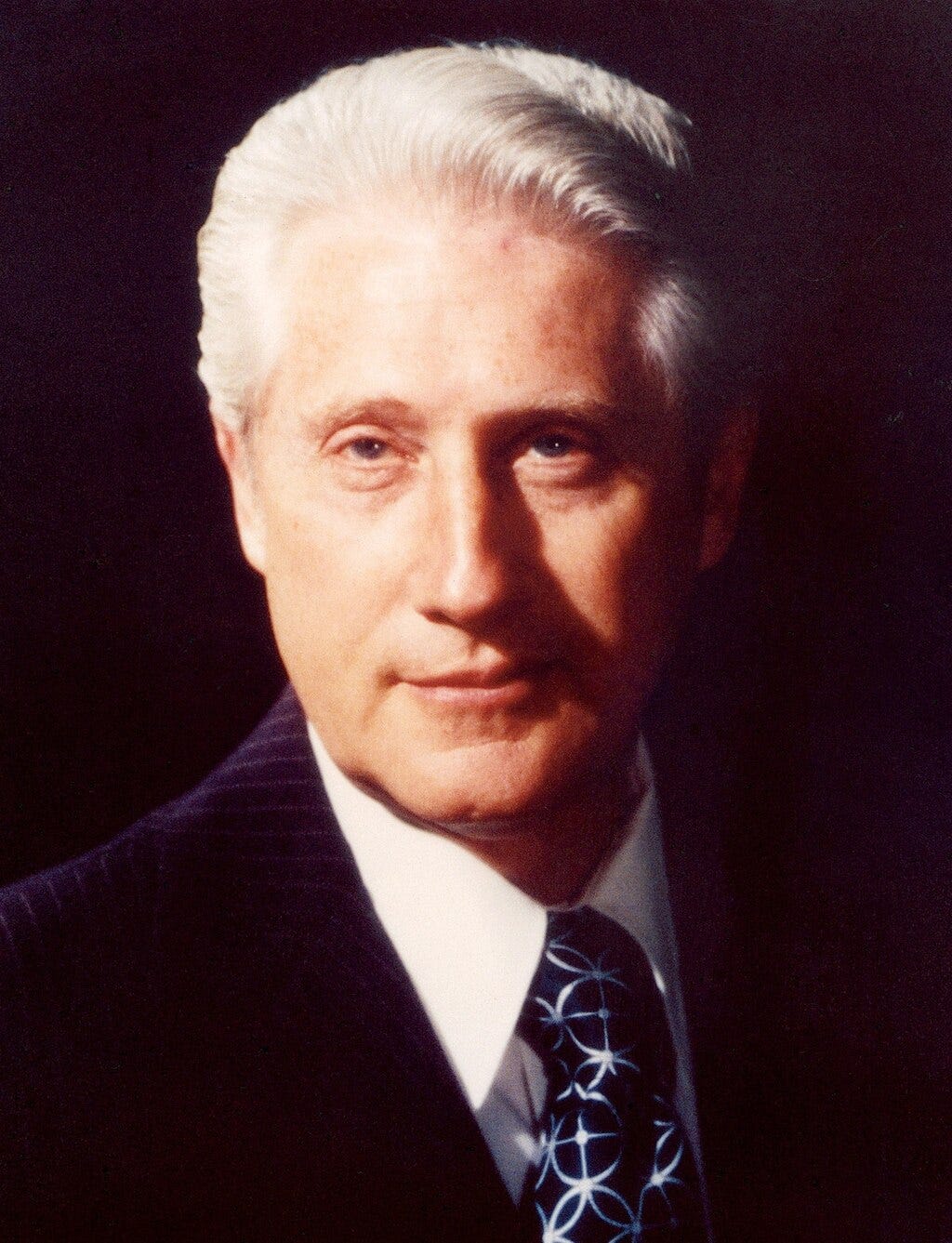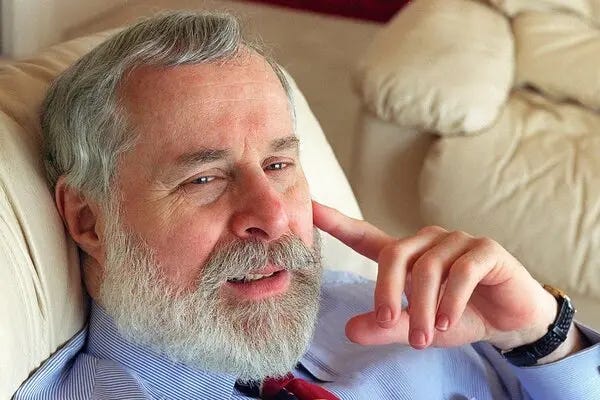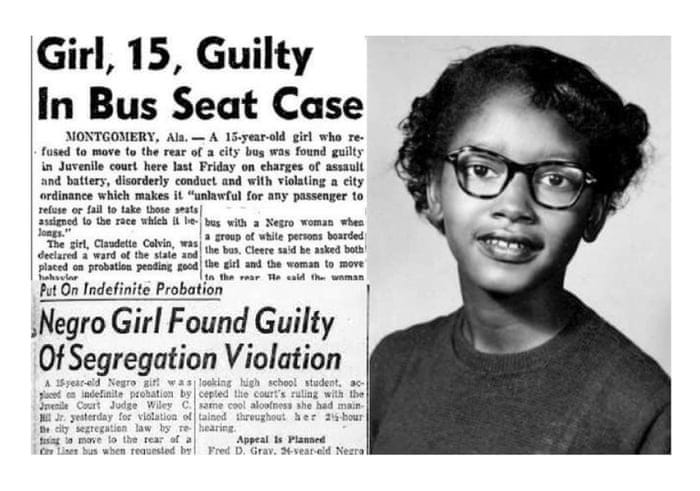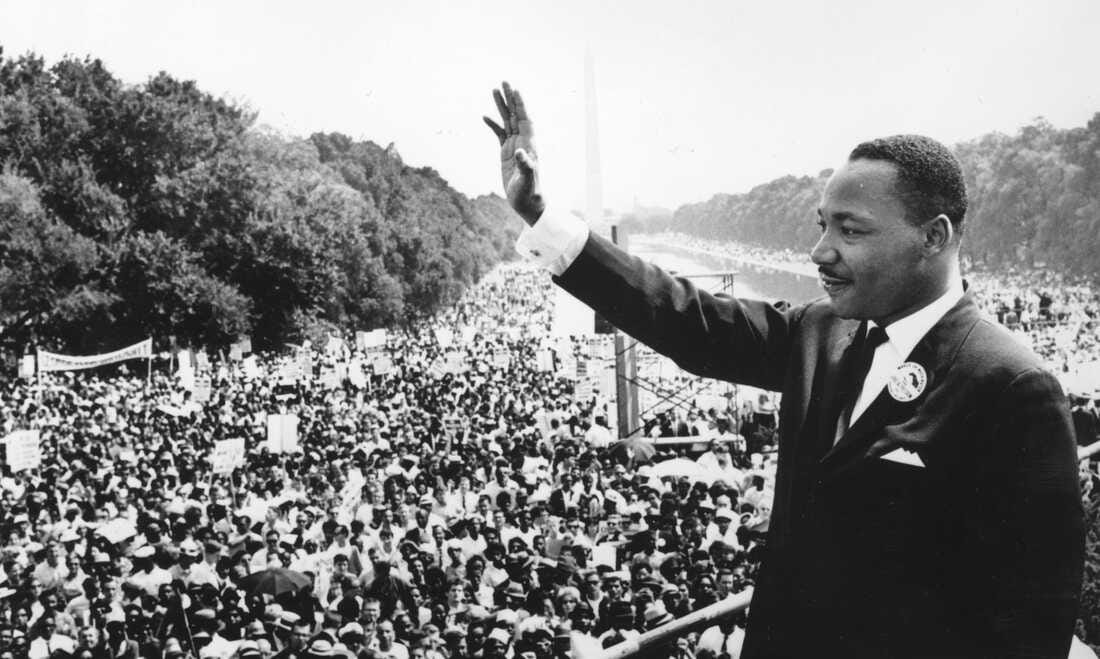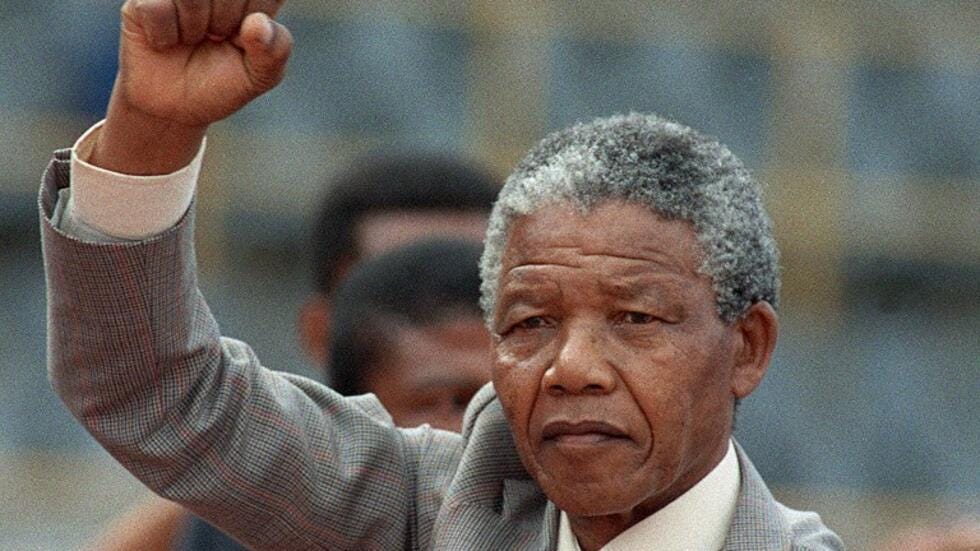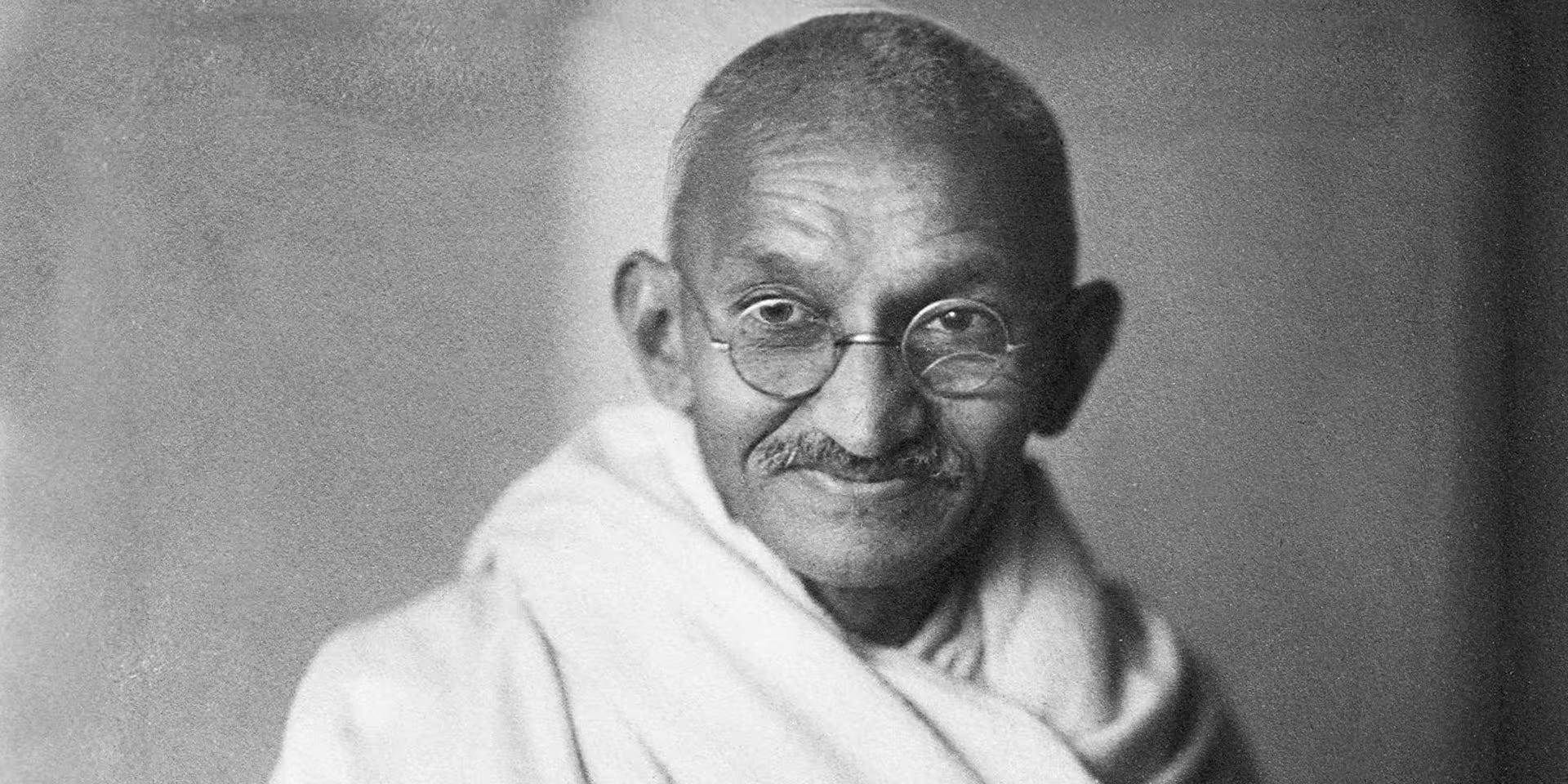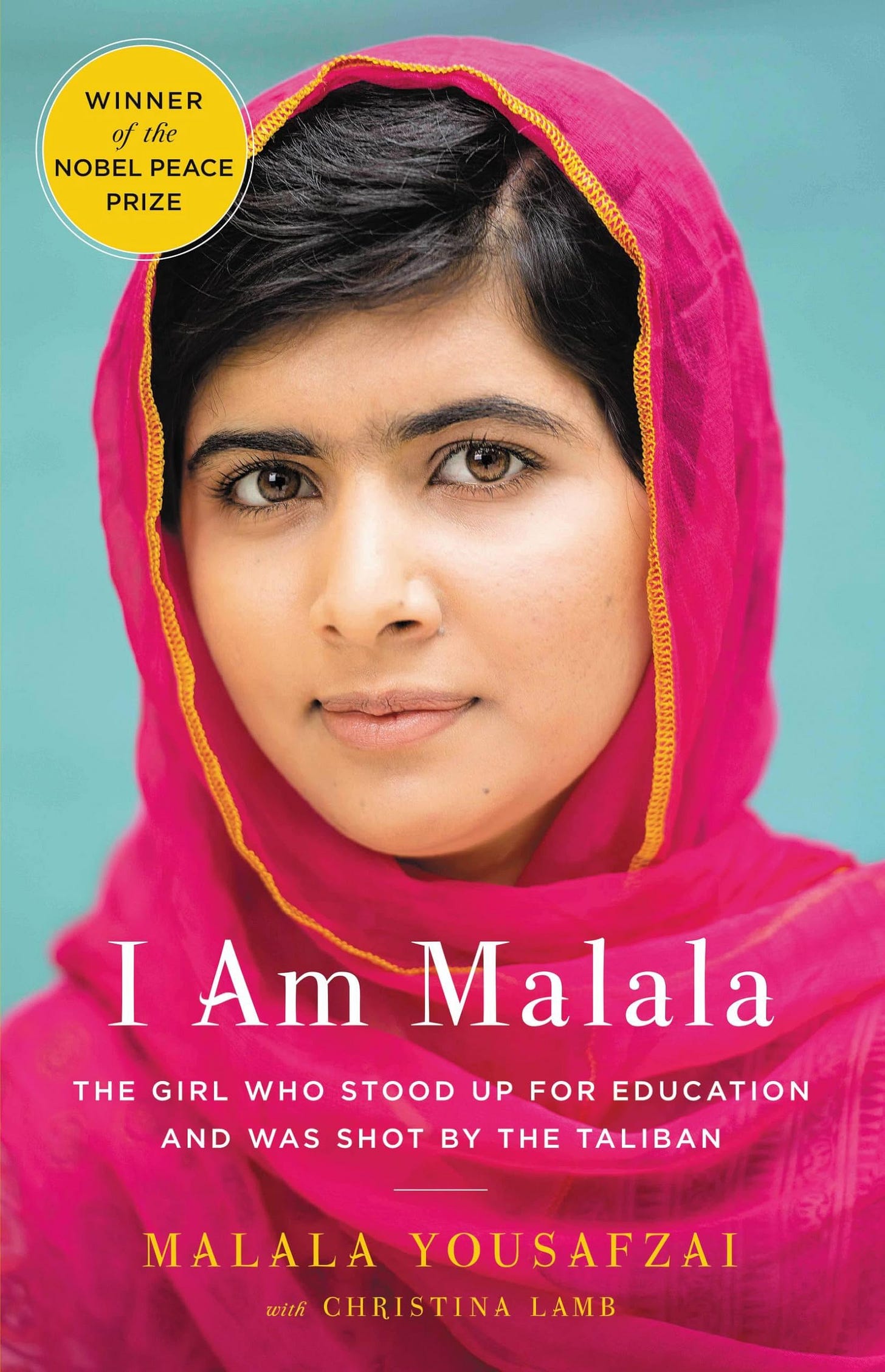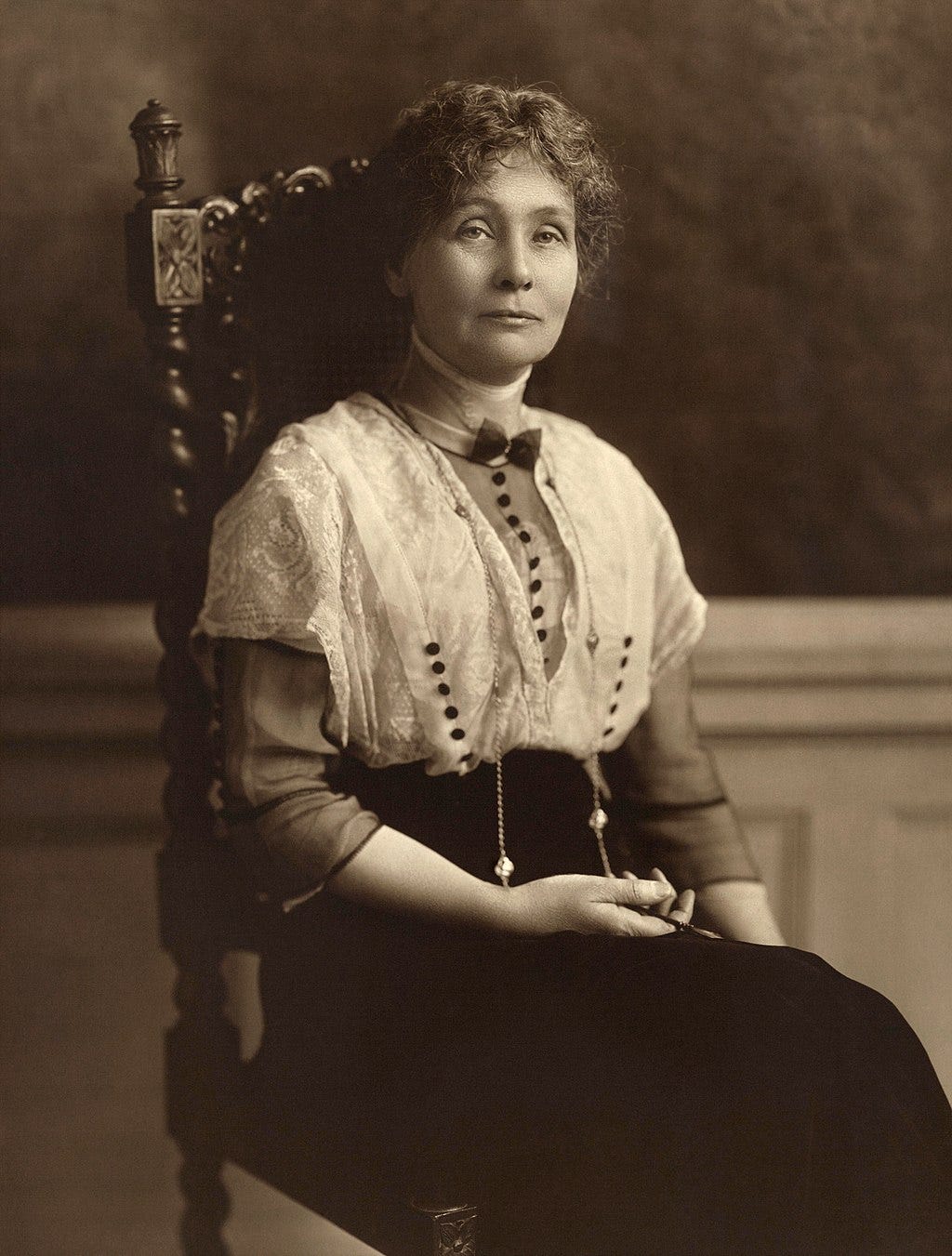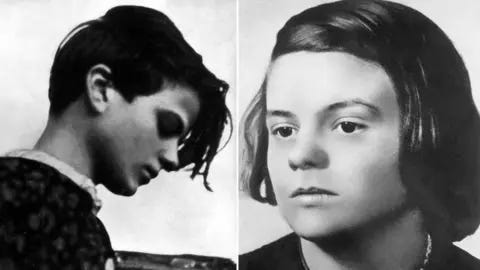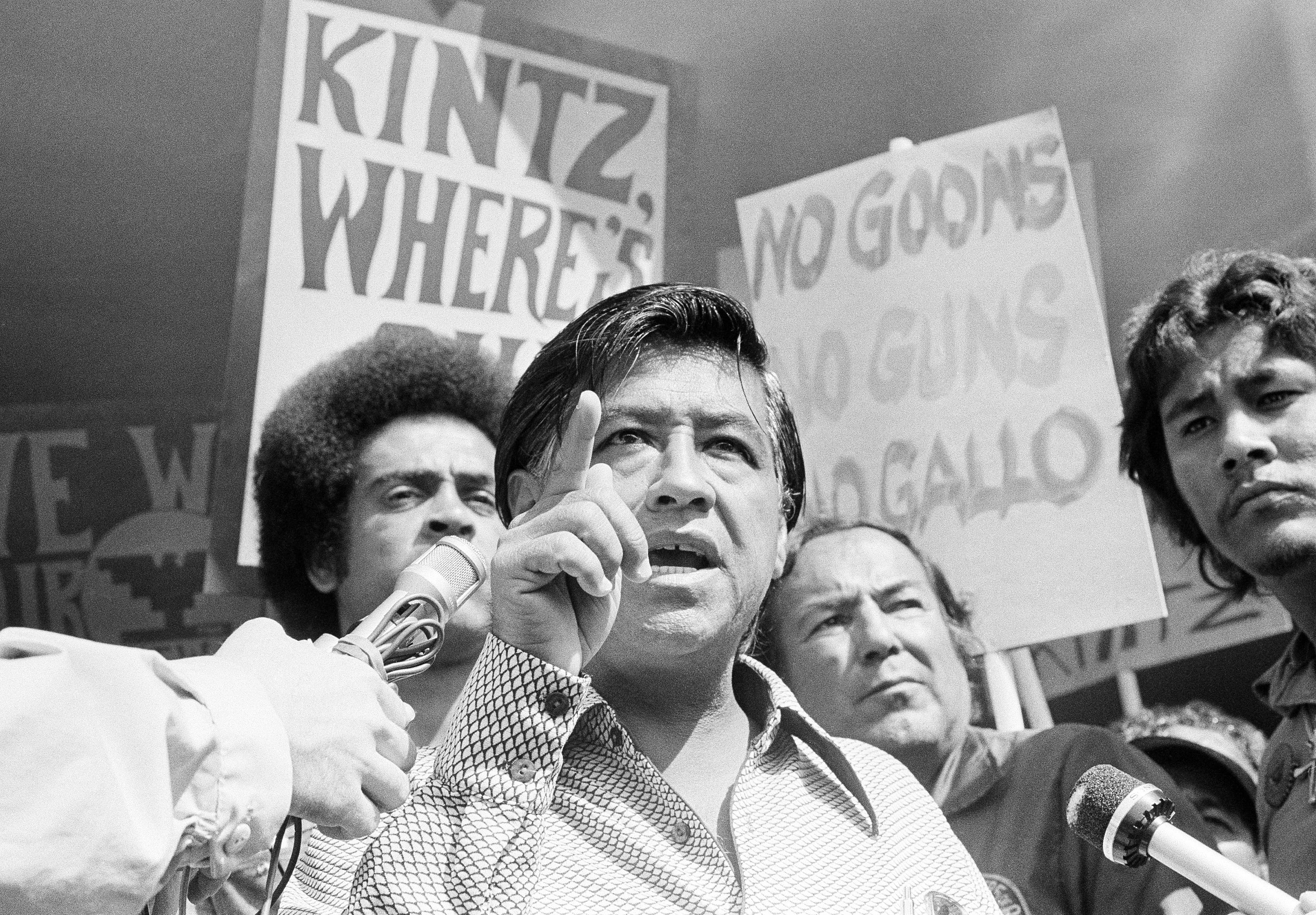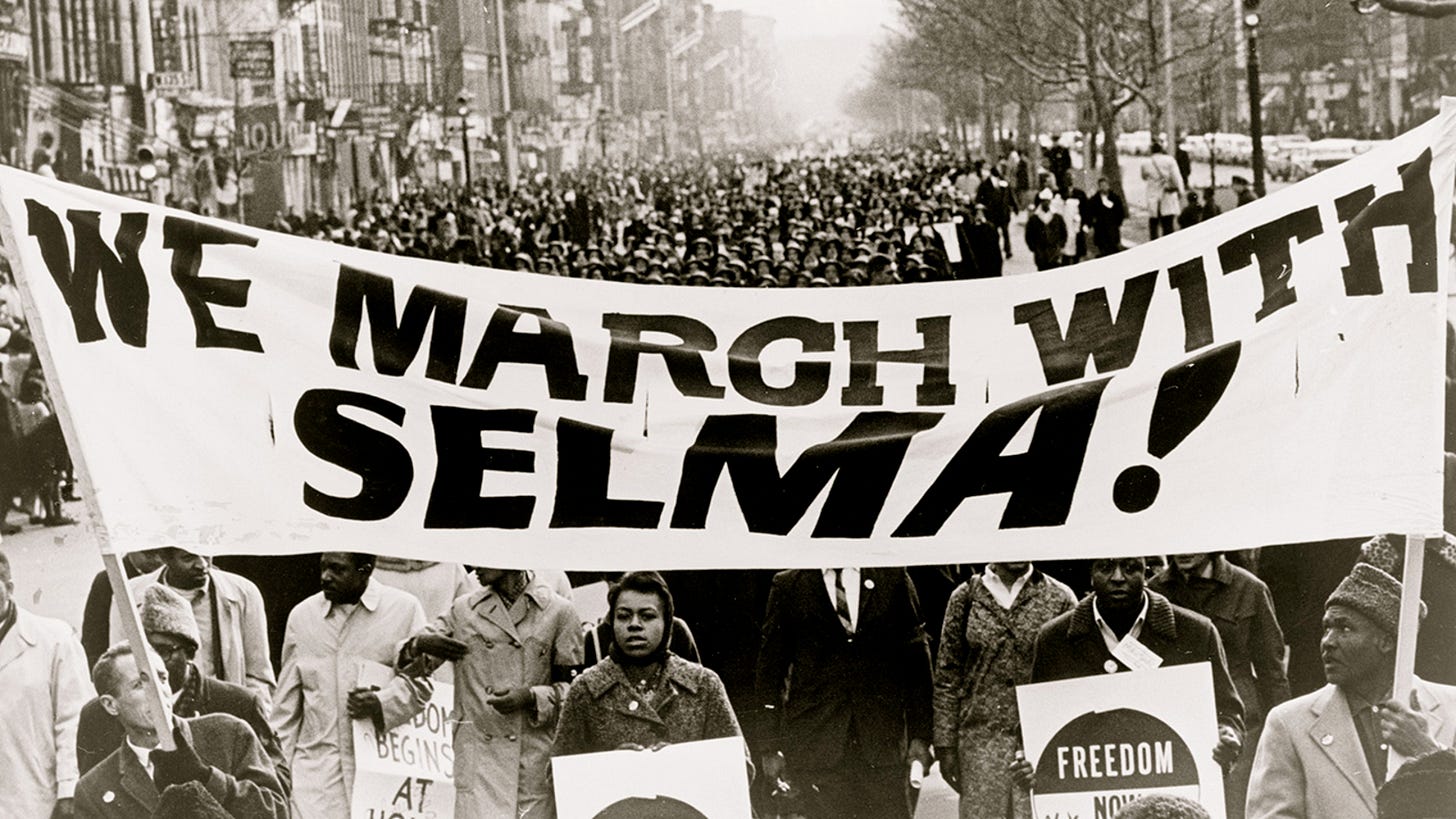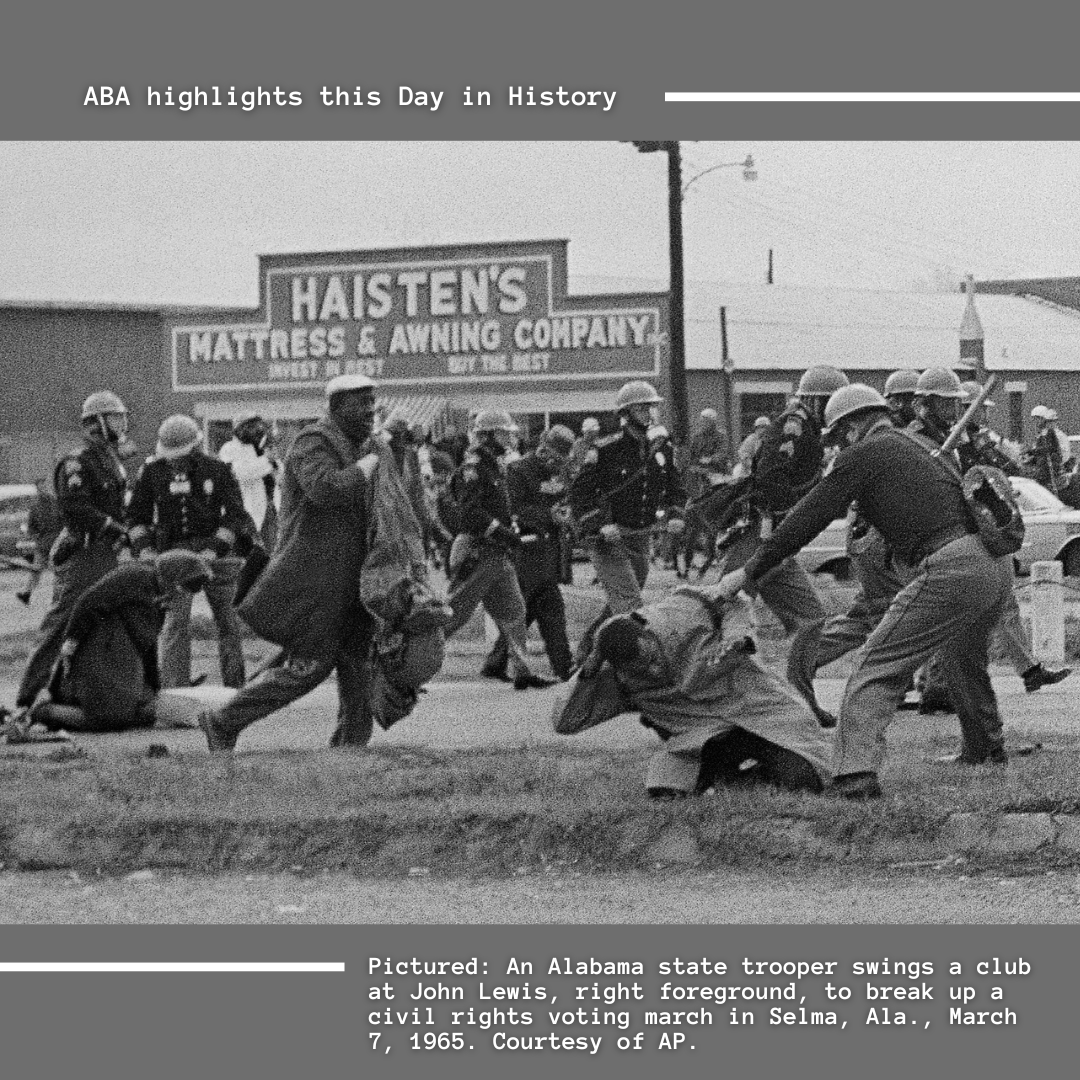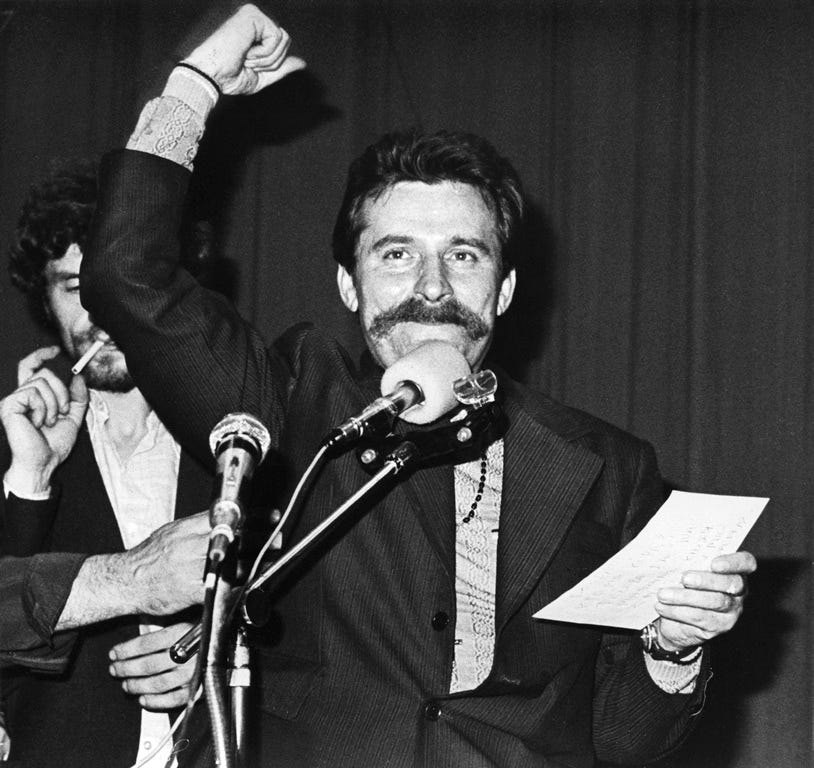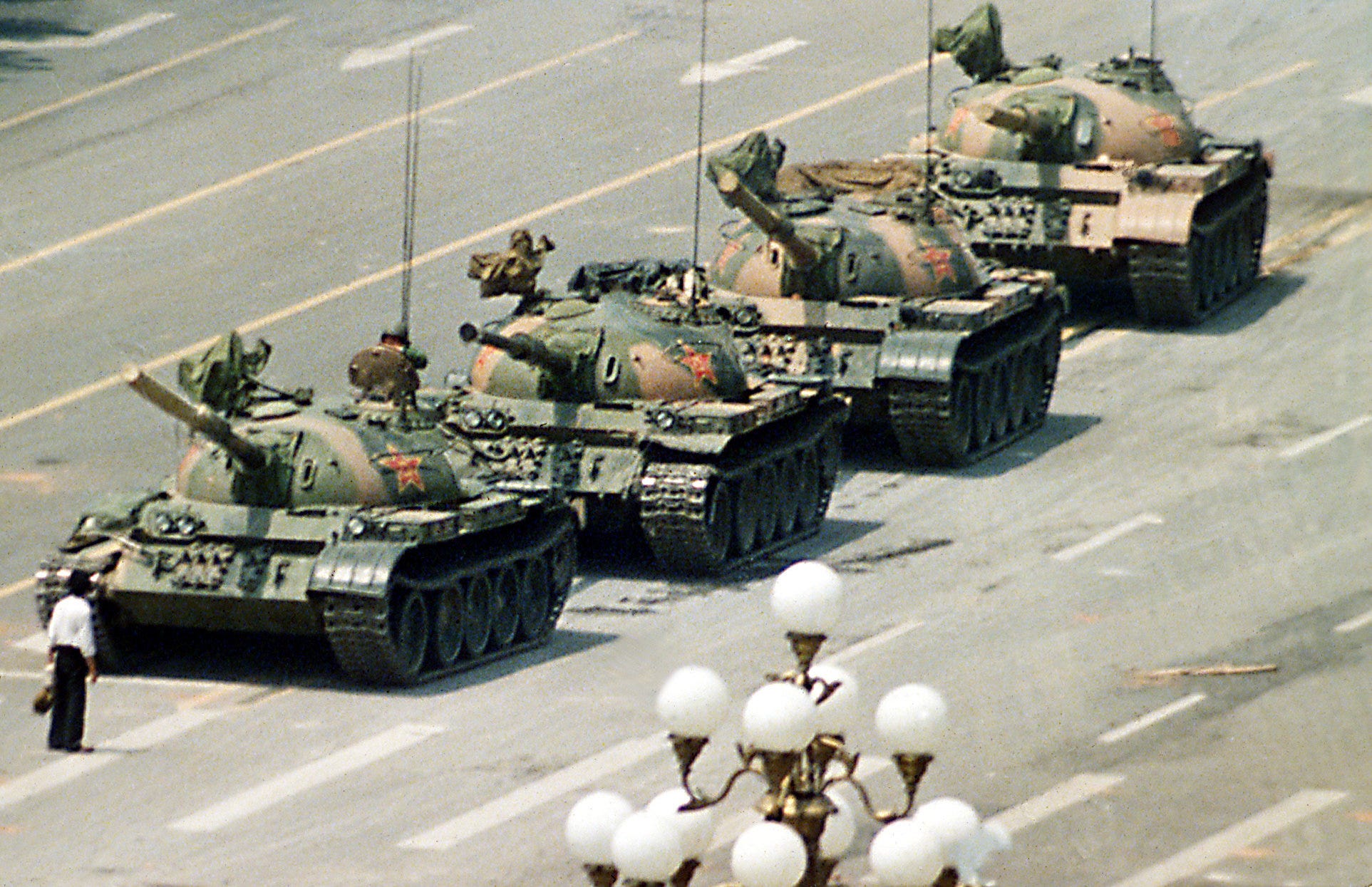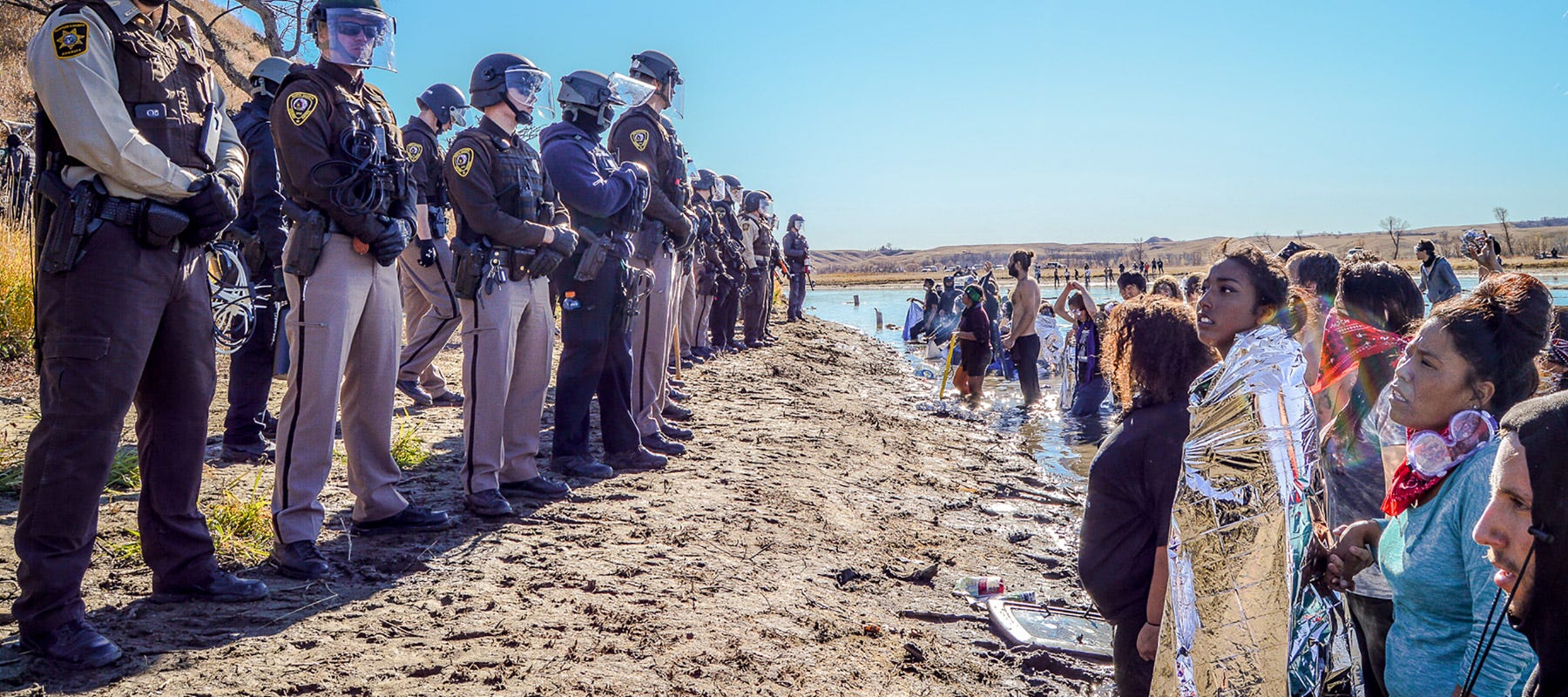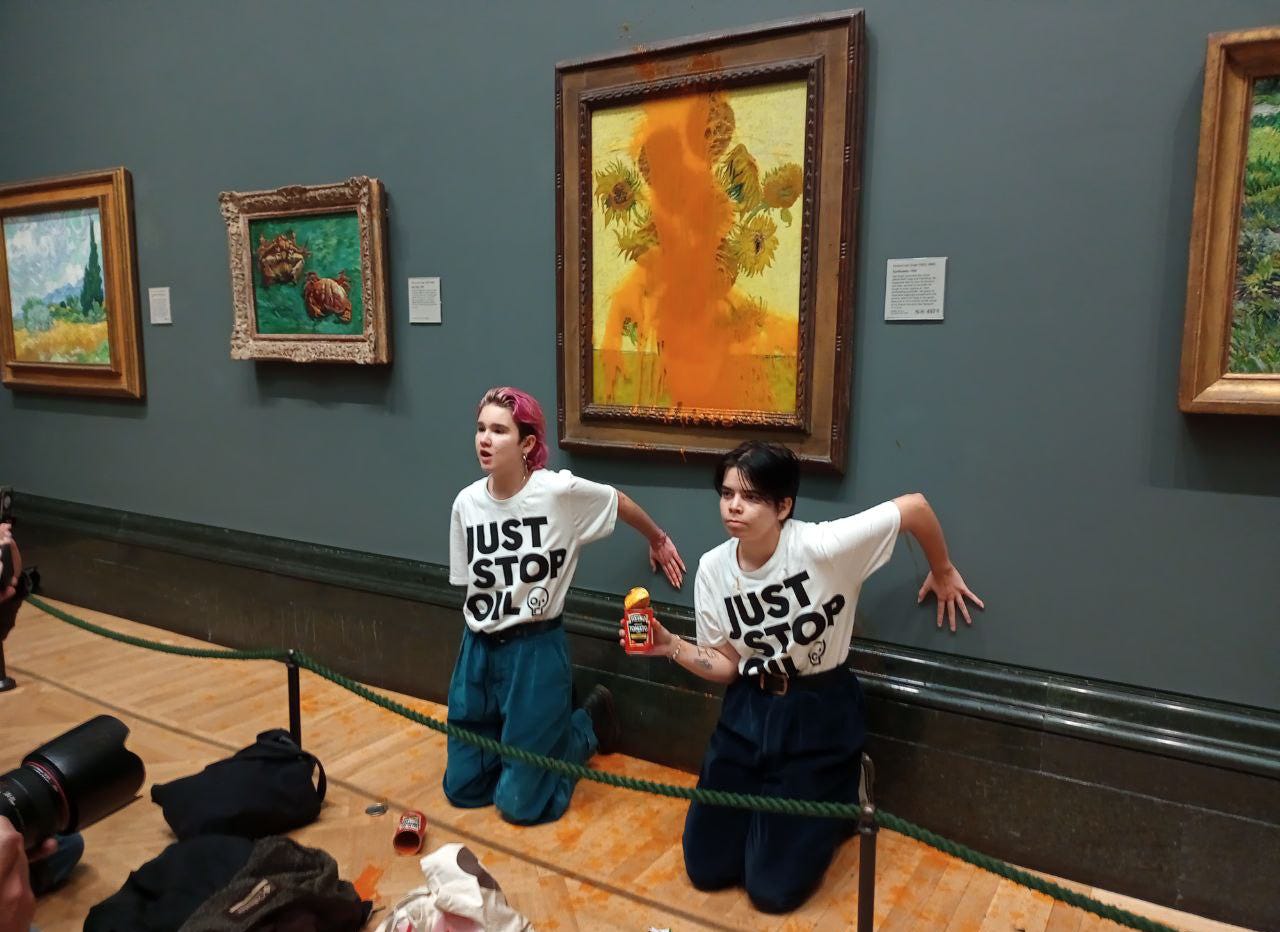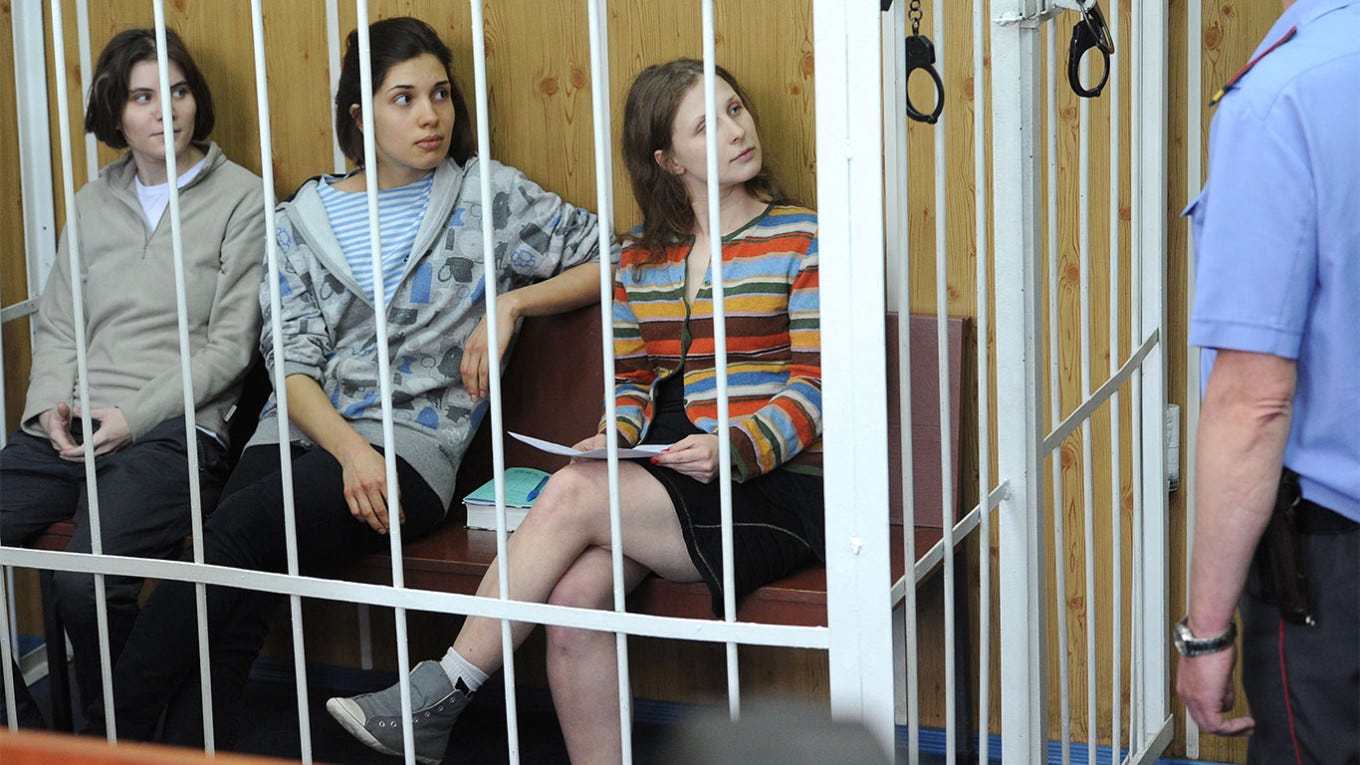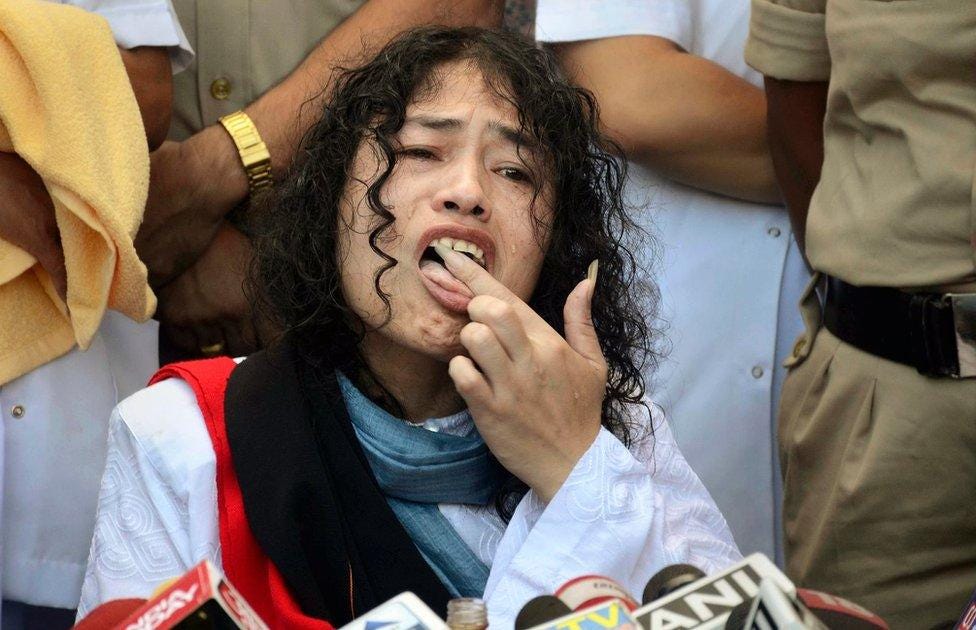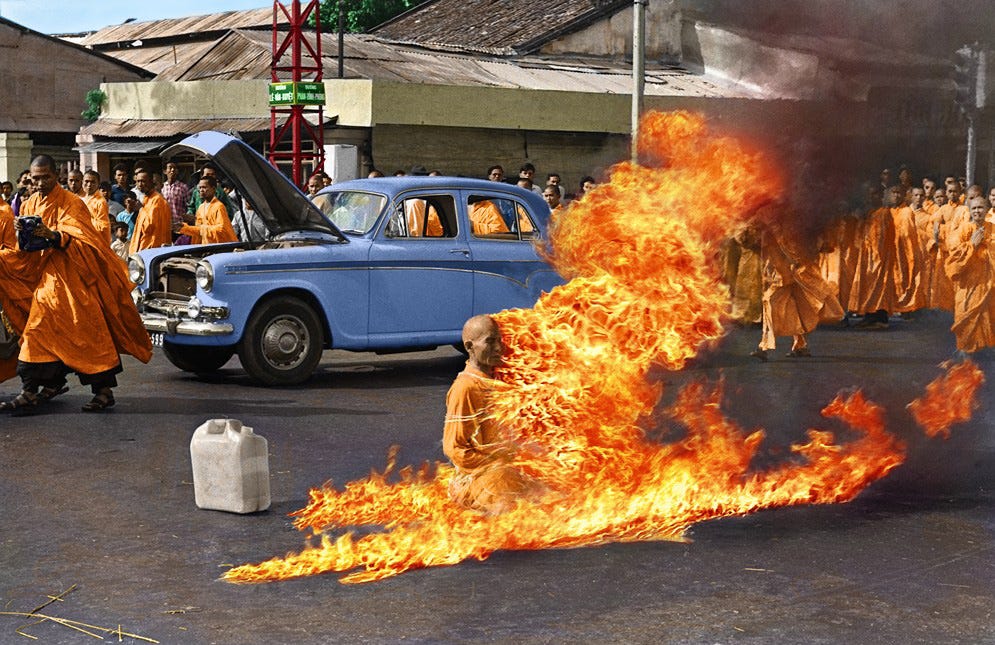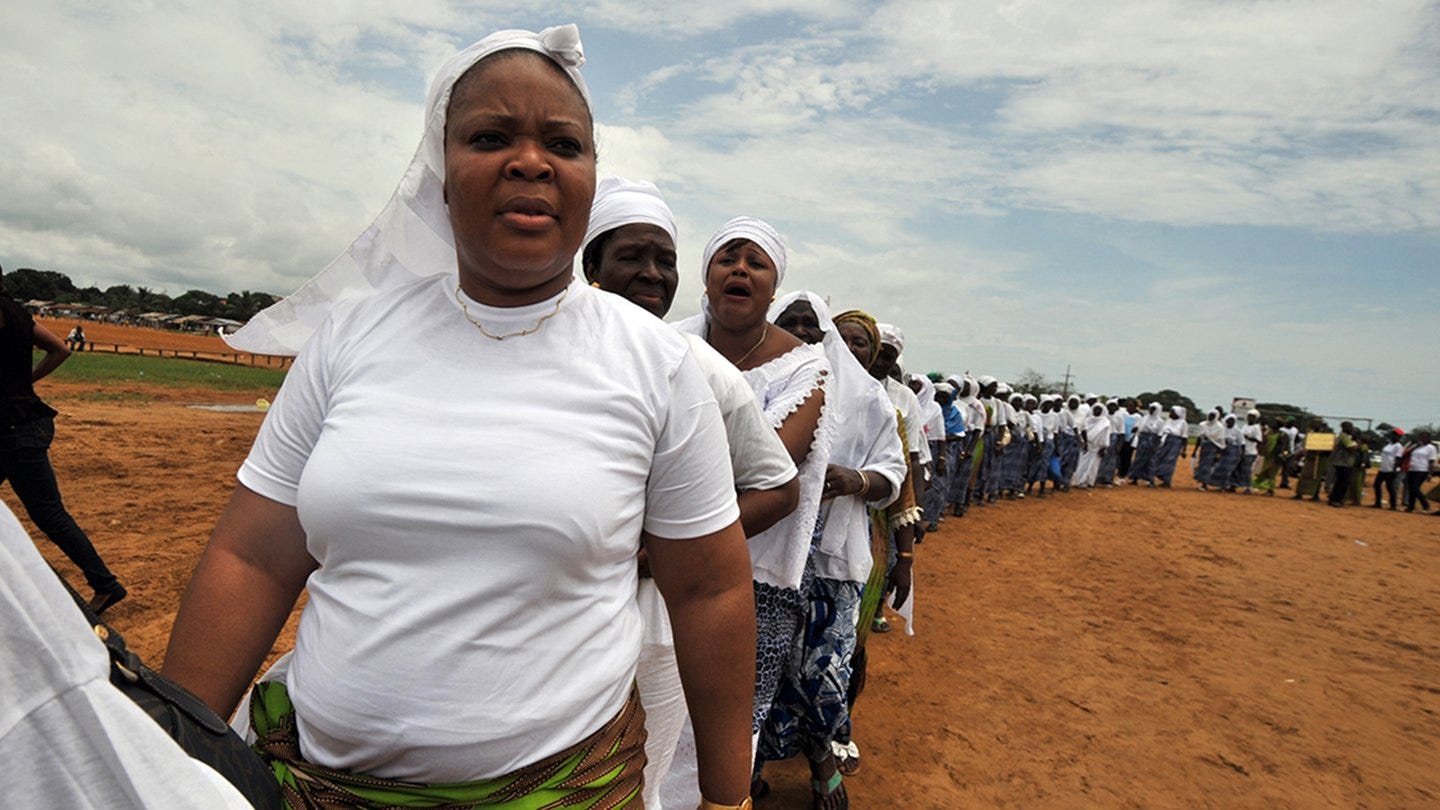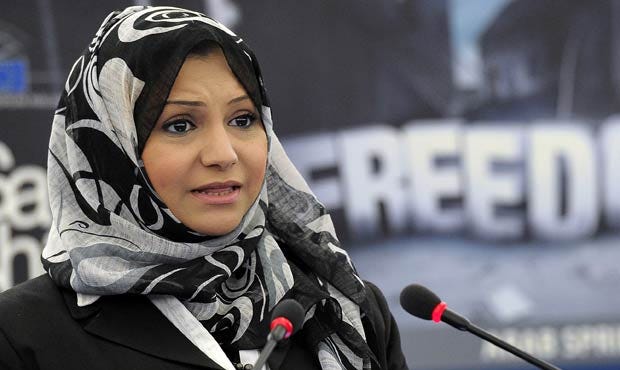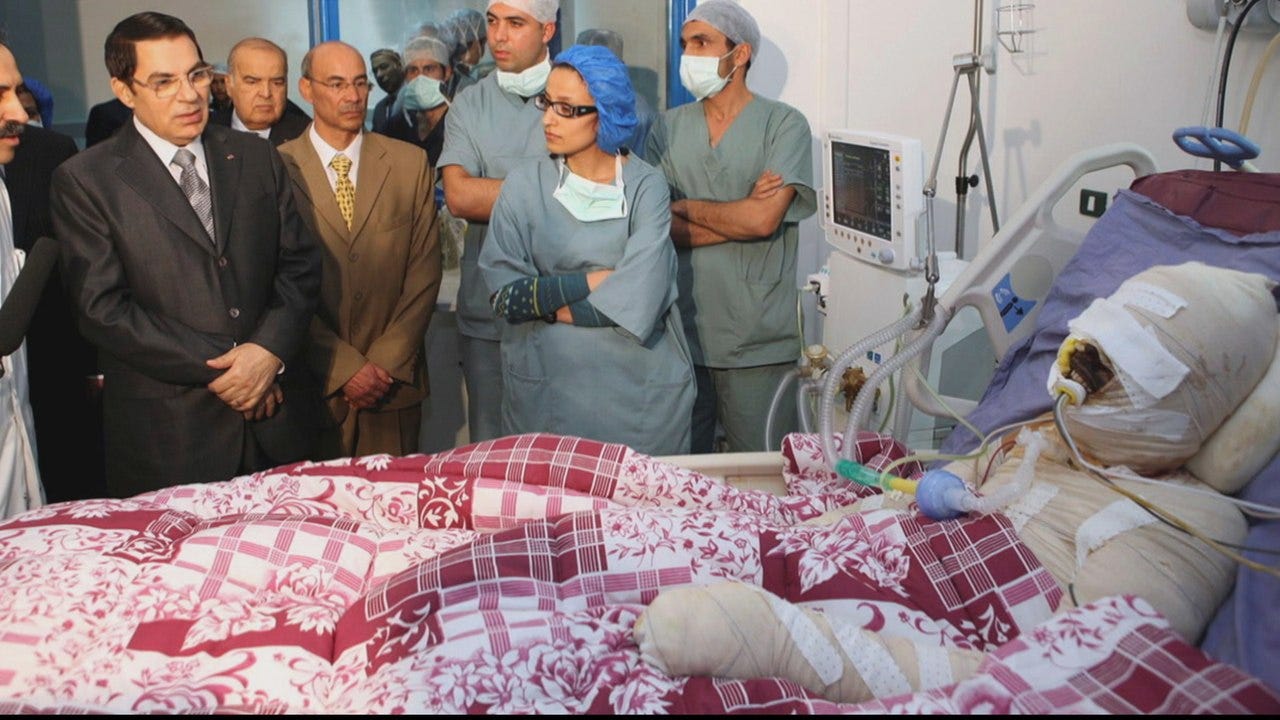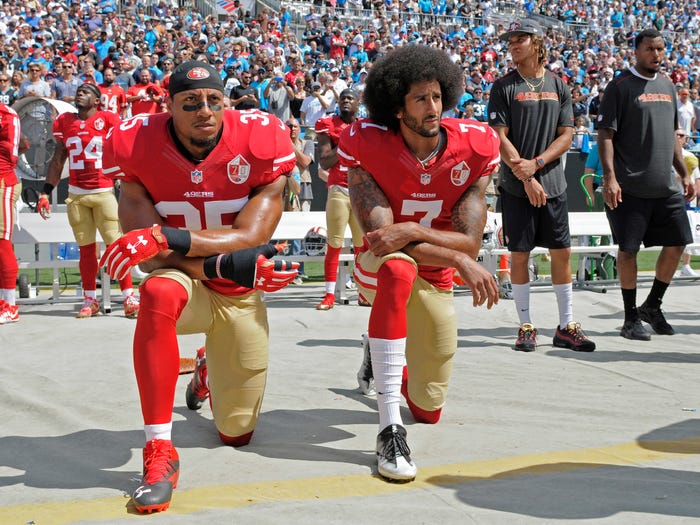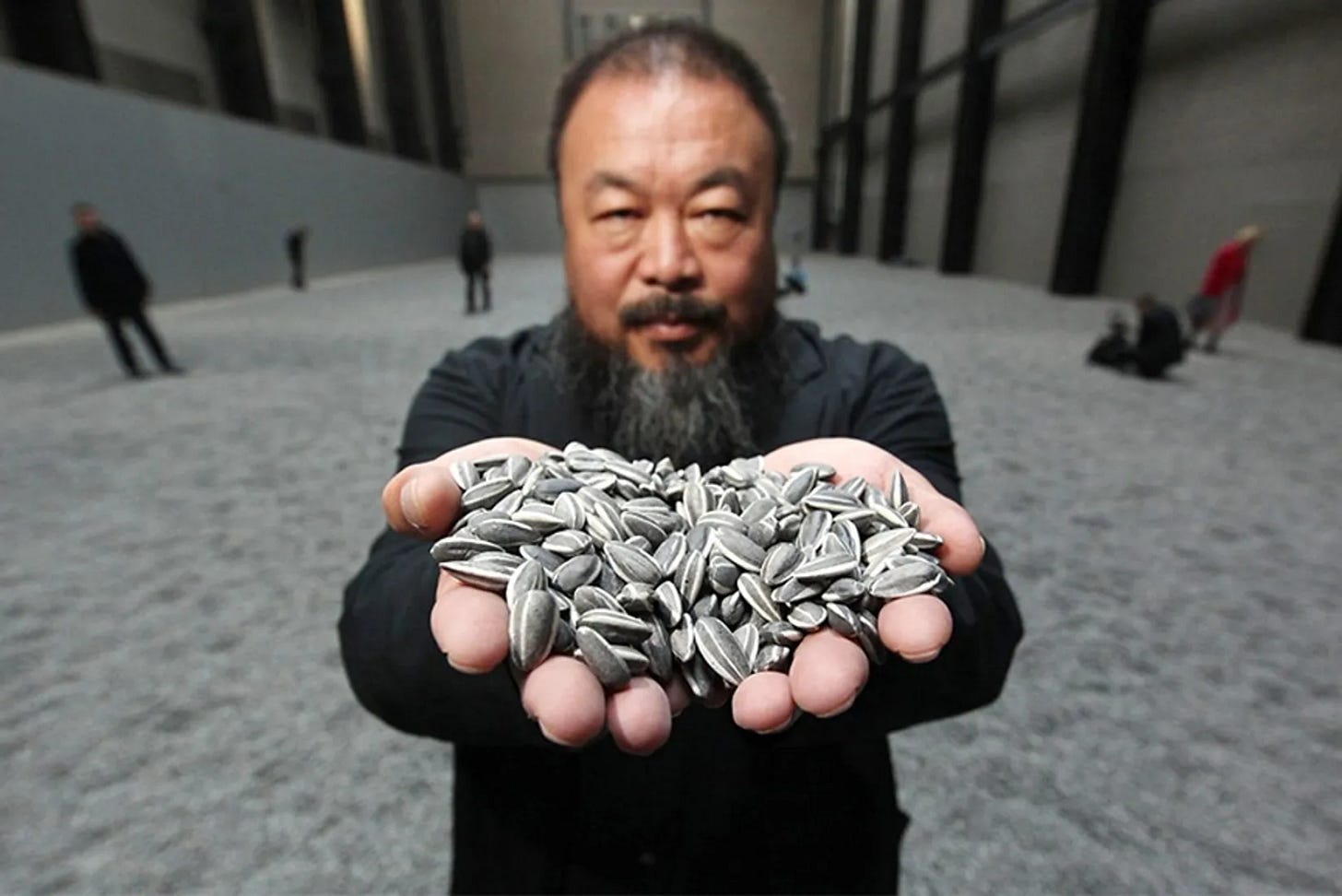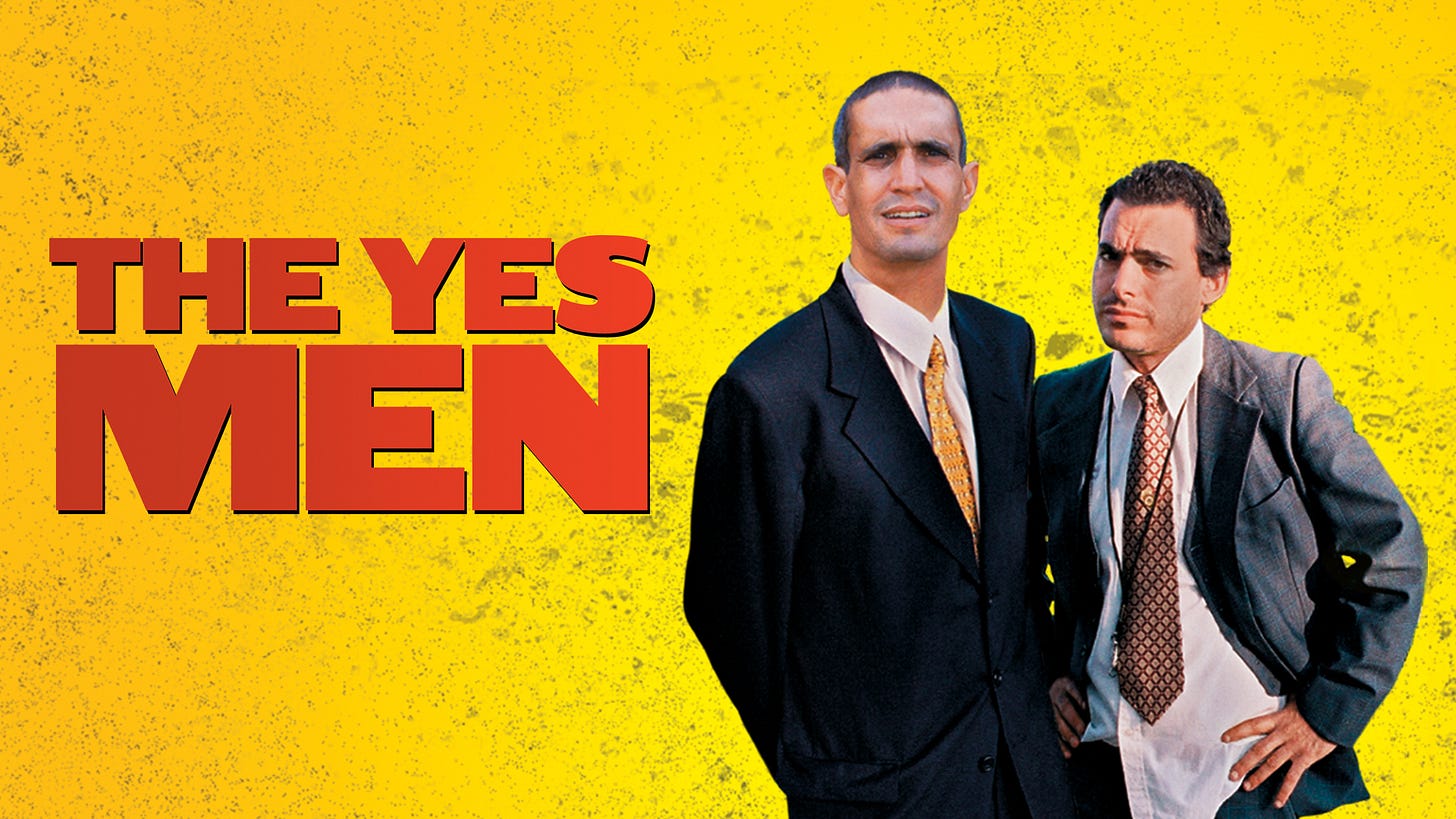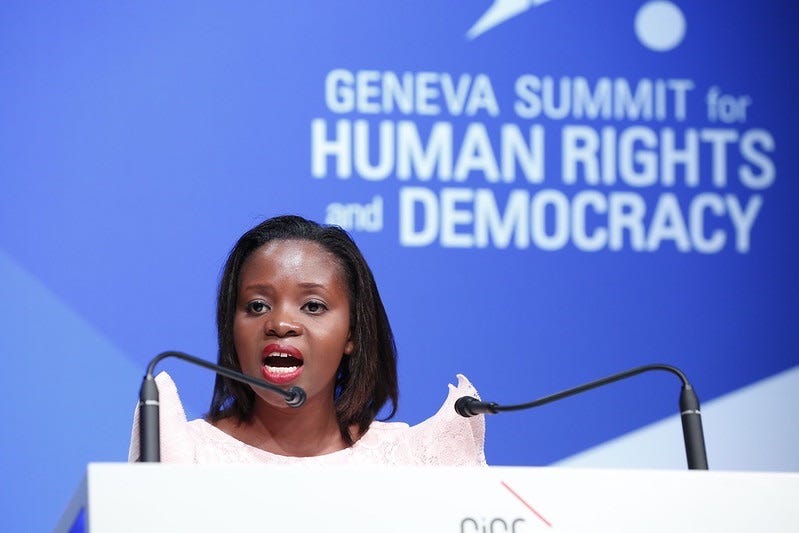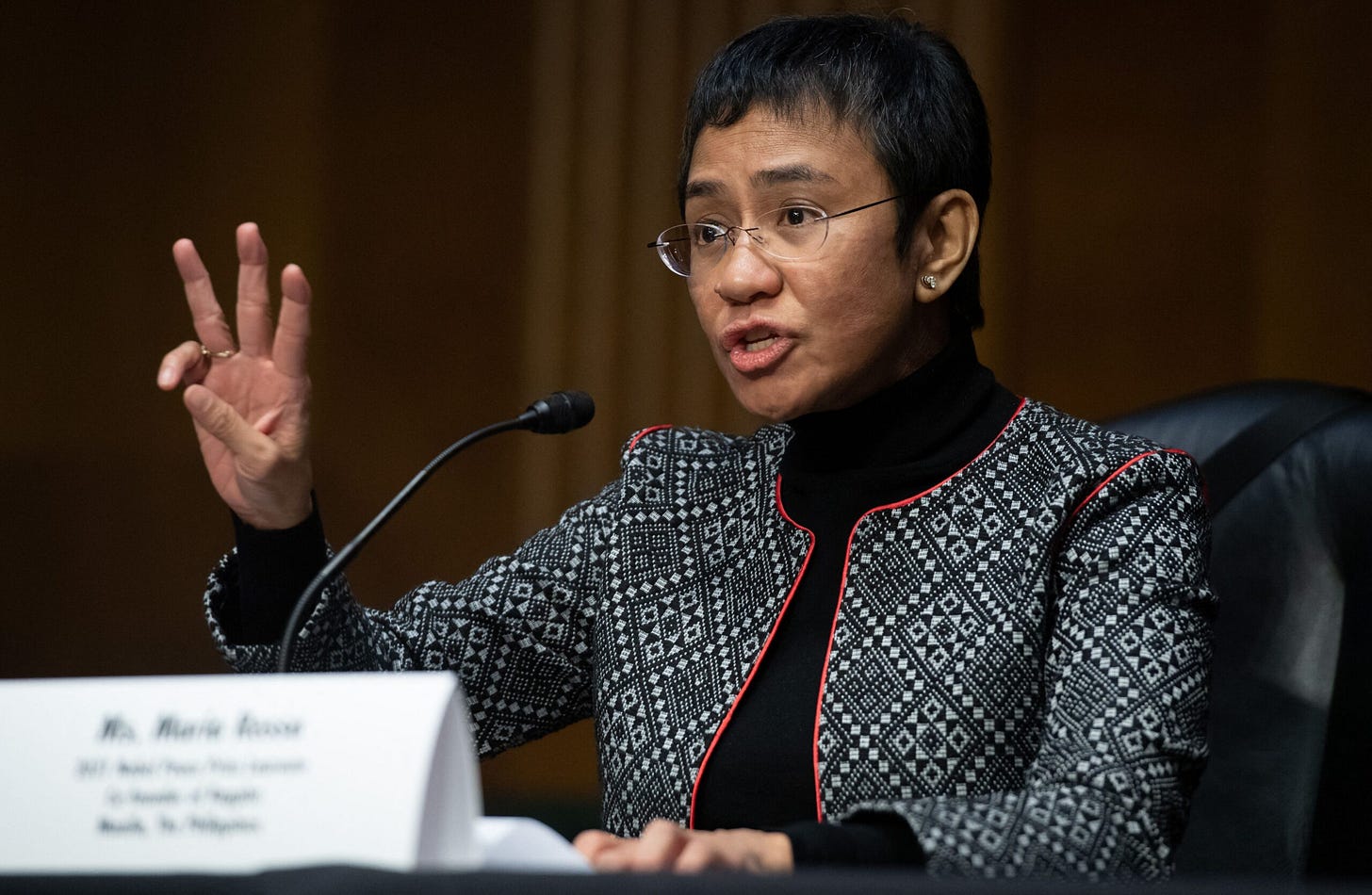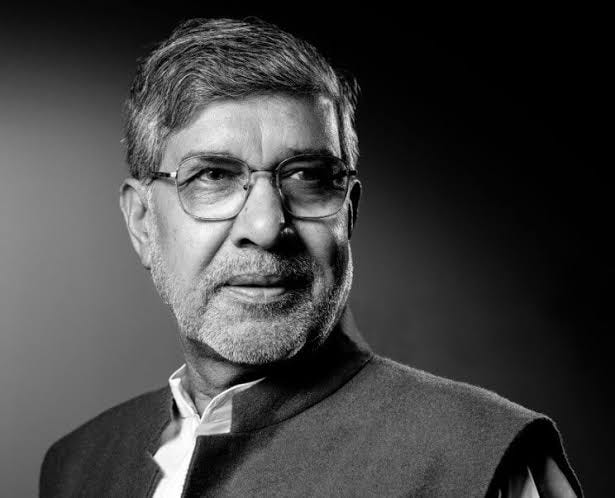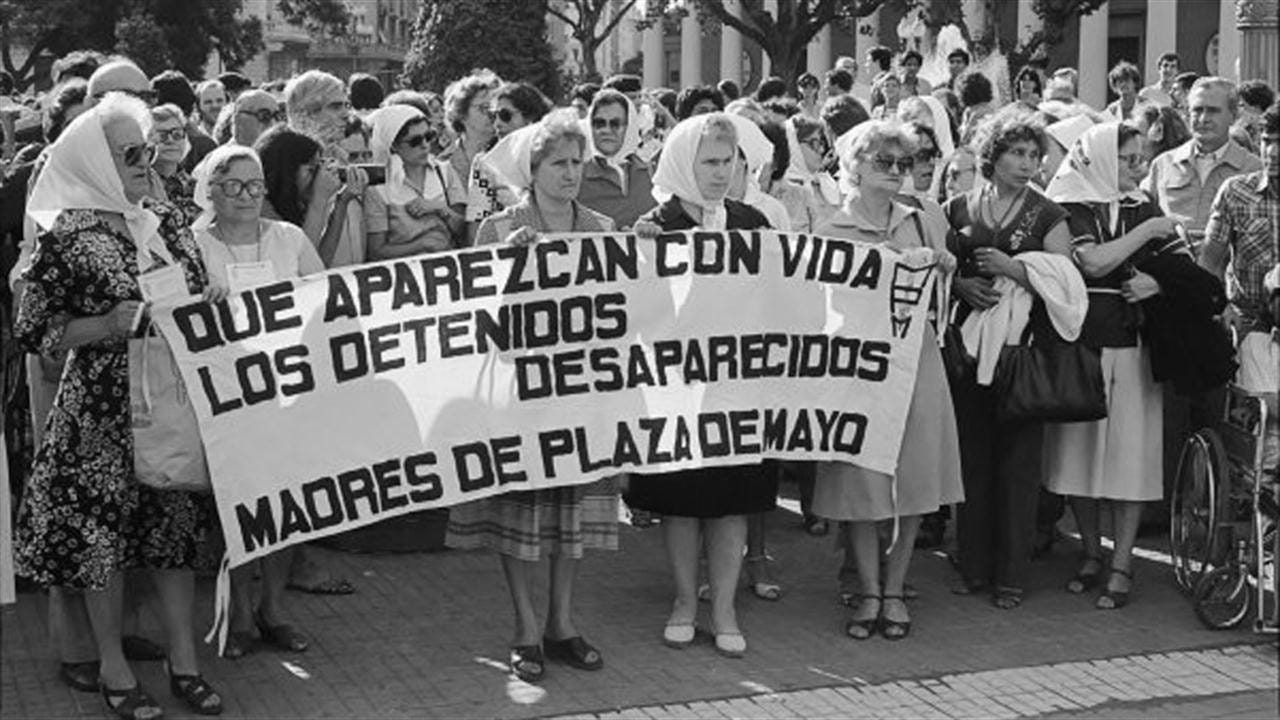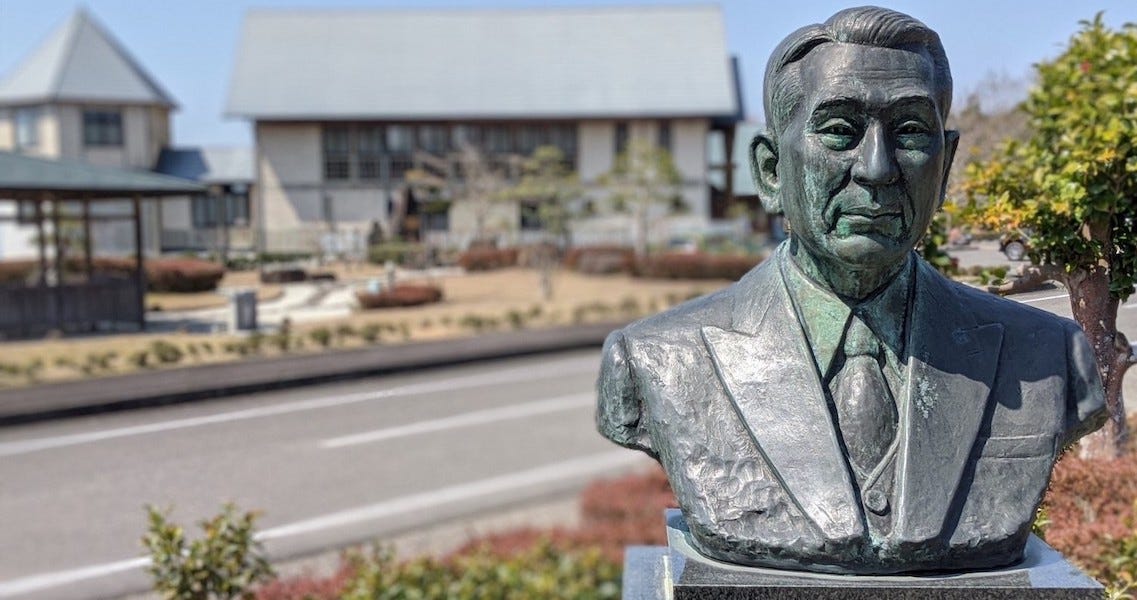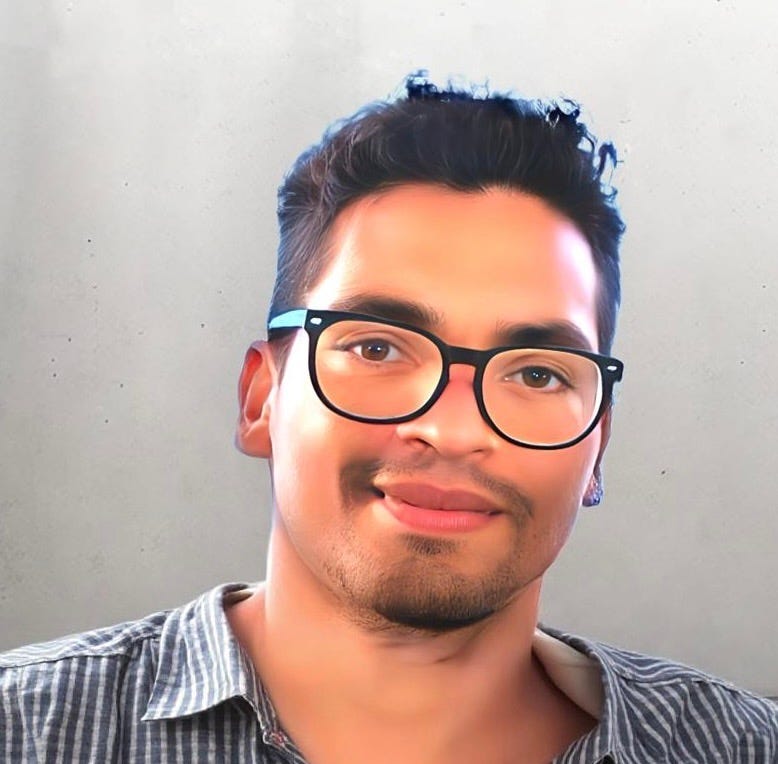Giant Slayers: 50 “Nobodies” Who Toppled Regimes
They Had No Power. No Platform. No Chance. They Won Anyway.
Dear Permission to be Powerful Reader,
With all of the crazy shit happening in the news every day…
It’s easy to get overwhelmed.
To panic…
To shut down…
Just take a look at recent news headlines:
❌ A Tesla Cybertruck exploded outside Trump International in Las Vegas, killing the driver and injuring seven. The truck was rented. Motive unclear. Everything spiraled.
❌ A helicopter crash into the Hudson near Jersey City killed six people and reignited public panic over crowded airspace and lax flight oversight.
❌ President Trump jacked tariffs on Chinese imports to 125%, triggering market freefall and retaliatory sanctions from Beijing.
Doomscrolling became so common it now has its own clinical warning. Studies show it directly increases anxiety, insomnia, and hopelessness.
Wow.
This is all so heavy.
I want to go smoke a joint immediately.
I want to eat junk food.
I want to go do bed.
Preferably all at once.
And that’s the precursor to learned helplessness.
Keep in mind, this is exactly what the powers that be WANT you to do.
They WANT you to shrink.
That makes you more pliable sheep.
But, you don’t have to take the bait.
Indeed, I would counter that the ultimate power move is to keep your power.
This is the time to be vigilant.
To focus on what you CAN control…
Not what you CAN’T…
You will discover that you have far more agency in this situation than you think.
Personally, during times like these, I like to think about it like this:
Now’s the time to go on the offense.
This isn’t the time to shrink.
Recoil…
Slowdown.
NO.
Now’s the time to slam your foot on the gas and start-driving like a crazy person.
I’m not kidding.
During normal times…
People look at that person and think they should get their head checked.
But during dark times…
When everyone else is scared…
Shrinking…
Hiding…
That person becomes a hero.
And icon.
A god.
That’s the person that wins the medal of valor.
It is 100% possible for you to be the next David who takes down Goliath.
So…
With that in mind…
Here are 50 “Nobodies” Who Challenged Power… and Won.
Julia “Butterfly” Hill – Lived for 738 days atop a 1,000-year-old California redwood tree to stop it from being cut down.
Her two-year tree-sit forced the logging company to spare the ancient tree and the surrounding grove1
Greta Thunberg – A Swedish teenager who started a solitary “school strike for climate” in 2018, igniting a global youth climate movement.
Her blunt calls for action shamed world leaders and inspired millions of students across 135 countries to protest for the planetcontext.news.
Berta Cáceres – A Honduran indigenous Lenca leader who organized her people to oppose a giant hydroelectric dam on their sacred river.
Her grassroots campaign successfully pressured the world’s largest dam builder to pull out of the project2.
Halting the dam’s construction (at great personal cost, as she was assassinated in 2016).
Wangari Maathai – The first African woman to win the Nobel Peace Prize for environmental activism.
She founded Kenya’s Green Belt Movement, mobilizing women to plant over 50 million trees.3
She boldly challenged a dictatorial regime’s plans to destroy forests (even enduring prison and beatings) to save her country’s green spacesnation.africa.
Ken Saro-Wiwa – A Nigerian writer who led his Ogoni people in peaceful protests against Shell’s devastating oil pollution in the Niger Delta.
He was executed by the military regime in 1995 for his activism, but his sacrifice exposed the atrocities of Big Oil and became a rallying cry for environmental justice in Nigeria4.
Chico Mendes – A Brazilian rubber tapper who united Amazon workers to nonviolently resist ranchers’ deforestation in the 1980s.
By organizing forest blockades (empates) and advocating “extractive reserves,” he stopped bulldozers, preserved swaths of rainforest, and pioneered sustainable-use protected areas in the Amazon.5
Nemonte Nenquimo – An indigenous Waorani woman from Ecuador who sued her government in 2019 to stop oil drilling on her people’s land.
She won a landmark court ruling protecting 500,000 acres of Amazon rainforest.6
Setting a legal precedent for indigenous rights and inspiring other tribes to defend their territories.
Rachel Carson – An American biologist whose 1962 book Silent Spring exposed the deadly impacts of pesticides like DDT on wildlife.
Her courageous research sparked public outrage and led to a U.S. ban on DDT7, galvanizing the modern environmental movement and proving that a lone scientist’s voice can change policy.
Bob Brown – An Australian conservationist who spearheaded the 1982–83 campaign to stop a hydro dam in Tasmania’s Franklin River wilderness.
His leadership of nonviolent blockades and court battles saved the wild Franklin River and helped launch the world’s first Green Party, showing how grassroots activism can shape politics.
Medha Patkar – The leader of India’s “Save the Narmada” people’s movement, who organized mass protests and hunger strikes against a huge dam that threatened to displace hundreds of thousands.
In 1993 her sustained campaign forced the World Bank to withdraw from the project — a rare victory for local communities over global financiers.
Edward Snowden – A former NSA contractor who in 2013 leaked top-secret files exposing global mass surveillance programs.
His disclosures ignited a worldwide debate on privacy and led the US Congress to end the NSA’s bulk phone data collection — a vindication of how blowing the whistle on government overreach can spur reform.
Chelsea Manning – A US Army intelligence analyst who leaked hundreds of thousands of classified documents revealing war crimes and human rights abuses in Iraq and Afghanistan.
Manning’s 2010 leaks (e.g. the “Collateral Murder” video) brought undeniable evidence of wrongdoing and sparked a global discussion on the ethics of war, even as she endured a harsh prison sentence for her actions.
Daniel Ellsberg – A US military analyst who leaked the Pentagon Papers in 1971, exposing decades of government deception about the Vietnam War.
His bold act of truth-telling fueled public opposition to the war and led to a Supreme Court ruling upholding press freedom to publish leaked documentsfreedom.pressfreedom.press, forever strengthening the role of a free press in keeping governments honest.
Katharine Gun – A British intelligence translator who in 2003 leaked a top-secret memo revealing an illegal US-UK spying operation to push the Iraq War.
Though arrested under the Official Secrets Act, her leak exposed the “dirty tricks” being used to pressure the UN and intensified public skepticism of the march to war.
Mordechai Vanunu – An Israeli nuclear technician who revealed the existence of Israel’s secret nuclear weapons program to the world in 1986.
Vanunu was abducted and imprisoned for 18 years….8
But his act of conscience confirmed what was long suspected and sparked global debate on nuclear secrecy9.
Jeffrey Wigand – A research chemist-turned-whistleblower who in 1996 exposed how Big Tobacco intentionally boosted nicotine levels and lied about smoking’s dangers.
His insider testimony helped bring about a $206 billion settlement in 1998 with tobacco companiesindependent.co.uk and tougher regulations on cigarettes, a major public health victory.
He was later played by Russell Crowe in The Insider…
Karen Silkwood – A nuclear plant technician in Oklahoma who raised alarms in the 1970s about unsafe conditions at a plutonium fuels facility. She died under mysterious circumstances en route to meeting a journalist with evidence, but her case led to federal investigations and greater nuclear safety standards (and inspired the award-winning film Silkwood), proving that one worker’s stand can spur industry accountability.
Frances Haugen – A former Facebook employee who turned over tens of thousands of internal documents in 2021, showing how the company knew its platforms harmed teens and spread extremism
In Senate testimony, Haugen likened Facebook to Big Tobacco and revealed it put “profits over people” – revelations that won bipartisan praise and renewed global calls to rein in Big Tech.
Mark Felt (“Deep Throat”) – The FBI’s deputy director who leaked crucial information about the Watergate cover-up to Washington Post reporters in 1972.
His secret guidance helped expose President Nixon’s crimes and take down the Nixon presidency,10 demonstrating the power of truth from within the system.
Peter Buxtun – A U.S. Public Health Service employee who blew the whistle on the infamous Tuskegee syphilis experiment
In 1972, Buxtun leaked information to the press about this 40-year unethical study, leading to its immediate termination and the creation of new federal rules for informed consent in human research11 – a lasting legacy for medical ethics.
Rosa Parks – In 1955, a Black seamstress in Alabama who quietly refused to give up her bus seat to a white passenger.
Parks’s simple act of civil disobedience sparked the 381-day Montgomery Bus Boycott and led to a Supreme Court ruling outlawing segregation on buses, igniting the broader U.S. civil rights movement.
Claudette Colvin – A 15-year-old Black student in Montgomery, Alabama who nine months before Rosa Parks did the same, was arrested in March 1955 for refusing to yield her bus seat to a white rider.
Colvin’s brave stand fed directly into the court case that ultimately struck down bus segregation12, though her role was long overlooked due to her youth and circumstances.
Martin Luther King Jr. – The Baptist minister who led a nonviolent mass movement against racial segregation in the 1950s–60s.
Through peaceful protests and eloquent moral appeals, King helped achieve the passage of the Civil Rights Act of 1964 and Voting Rights Act of 1965,13 proving that disciplined, nonviolent resistance can transform a nation’s laws.
Nelson Mandela – Spent 27 years as a political prisoner for fighting South Africa’s racist apartheid system, yet emerged unbroken.
Upon his release in 1990, Mandela led negotiations that peacefully ended apartheid and, in 1994, became South Africa’s first Black president – a living symbol of how patience, forgiveness, and resolve can overcome even decades of oppression.
Mahatma Gandhi – The Indian independence leader who pioneered the philosophy of satyagraha (nonviolent resistance).
Through mass civil disobedience campaigns like the 1930 Salt March, Gandhi undermined British colonial rule and helped win India’s freedom in 1947, inspiring civil rights movements across the world with the idea that “one must meet hate with love.”
Malala Yousafzai – A Pakistani schoolgirl who blogged and spoke out for girls’ education under Taliban rule.
In 2012 a Taliban gunman shot her in the head for her activism – and she survived, becoming an even stronger global advocate. Malala’s courage rallied the world to the cause of girls’ education, and at 17 she became the youngest Nobel Peace Prize laureate in history.
Emmeline Pankhurst – The British suffragette leader who in the early 1900s led a militant campaign for women’s right to vote.
She and her Women’s Social and Political Union shattered windows, endured imprisonment and hunger strikes (suffering brutal force-feedings in jail)nps.gov – pressure tactics that succeeded when Britain granted women suffrage (partial in 1918, full in 1928).
Harriet Tubman – An escaped slave who became the most daring “conductor” of the Underground Railroad.
Repeatedly sneaking into the slave-holding South, Tubman guided an estimated 70 enslaved people to freedom (and famously “never lost a passenger”), directly undermining the slave system and earning the nickname “Moses” for delivering her people from bondage.
Sophie Scholl – A 21-year-old German student who, with her brother and the White Rose group, secretly distributed leaflets denouncing Nazi atrocities in 1942–43.
Caught by the Gestapo and executed for treason, Sophie’s principled defiance14made her a martyr and an enduring symbol of internal resistance to Hitler’s regime.
César Chávez – A Mexican American farmworker who organized the United Farm Workers union in the 1960s to fight for migrant laborers’ rights.
Through relentless strikes, boycotts, and personal hunger strikes, Chávez forced California grape growers to sign union contracts in 1970 that improved pay and conditions15 – a landmark victory showing the power of organized, nonviolent labor resistance.
John Lewis – A leader of the U.S. civil rights movement who, at age 25, led the 1965 “Bloody Sunday” march in Selma, Alabama for voting rights.
He was brutally beaten by state troopers on the Edmund Pettus Bridge, but the shocking images of Lewis’s courage and bloodied skull hastened passage of the Voting Rights Act of 1965, translating his sacrifice into law.
Lech Wałęsa – An electrician at a Polish shipyard who in 1980 led a massive strike that gave birth to Solidarity, the first independent trade union behind the Iron Curtain.
Despite being jailed under martial law, Wałęsa persisted; by 1989 Solidarity’s pro-democracy push had ended communist rule in Poland16, and Wałęsa became the nation’s first freely elected president – a triumph for peaceful revolution.
“Tank Man” of Tiananmen – The unknown Chinese protester who on June 5, 1989 stood alone in front of a column of tanks leaving Tiananmen Square, armed with nothing but shopping bags.
His astonishing act of defiance halted the tanks17 and was captured in an iconic photograph – a lasting symbol of individual courage against overwhelming military force.
Standing Rock Water Protectors – The collective of Indigenous leaders and allies who in 2016 set up camp in North Dakota to block the Dakota Access Pipeline from crossing the Missouri River and contaminating Sioux tribal water.
Braving blizzards and police crackdowns, the peaceful “Water Protectors” delayed the pipeline’s completion and sparked a global indigenous rights movement under the banner “Mni Wiconi” (“Water is Life”).
Just Stop Oil activists – Young climate campaigners in the UK who in 2022 took direct action to demand an end to new oil and gas.
They grabbed headlines with disruptive nonviolent protests – even throwing tomato soup on a famous Van Gogh painting under glass – to jolt the public and politicians into confronting the climate emergency. Their shock tactics provoked controversy but undeniably put the climate crisis onto front pages and political agendas.
Pussy Riot – A Russian feminist punk band that staged a guerrilla performance protest in Moscow’s main cathedral in 2012, beseeching the Virgin Mary to rid Russia of Putin.
Three members were arrested and sent to prison camps for “hooliganism,” but the case drew worldwide outrage at Putin’s repression.18 Pussy Riot’s blend of art and dissent turned them into global symbols of resistance against authoritarianism and misogyny.
Irom Sharmila – An Indian activist from Manipur who undertook the world’s longest hunger strike, refusing food for 16 years (2000–2016) to protest an oppressive military law in India’s northeast.
Kept alive by force-feeding through a nasal tube. Sharmila persisted in solitary protest until she helped put the remote region’s human rights abuses on the world’s radar, earning the nickname “Iron Lady” for her unbreakable will.
Thích Quảng Đức – A Vietnamese Buddhist monk who, on June 11, 1963, calmly sat down at a Saigon intersection and set himself on fire to protest the persecution of Buddhists under South Vietnam’s U.S.-backed regime.
His self-immolation – captured in an indelible photograph – shocked the world and intensified pressure on the Diệm government, which was overthrown later that year. Quảng Đức’s ultimate sacrifice showed the profound impact of moral witness.
EDITOR’S NOTE: PLEASE DO NOT SELF-HARM!
Leymah Gbowee – A Liberian social worker who organized Christian and Muslim women to nonviolently demand an end to Liberia’s savage civil war. In 2003, Gbowee led thousands of women in weekly pray-ins and sit-ins – and even a threatened “sex strike” – that forced warlords to negotiate peace.
Their efforts helped stop the war and usher in Africa’s first female head of state, earning Gbowee a share of the Nobel Peace Prize.
Asmaa Mahfouz – A 26-year-old Egyptian woman whose viral video blog on January 18, 2011 helped spark Egypt’s revolution.
Fed up with corruption and repression, Mahfouz called on Egyptians to protest in Tahrir Square on January 25. Her passionate appeal (viewed by hundreds of thousands) inspired throngs to turn out – the beginning of the uprising that toppled dictator Hosni Mubarak in just 18 days.
Mohamed Bouazizi – A humble fruit vendor in Tunisia who, in despair at harassment and injustice, set himself ablaze on December 17, 2010.
Bouazizi’s tragic self-immolation ignited furious protests in Tunisia that ousted its long-time dictator within weeks – the first victory of the Arab Spring – and then spread like wildfire as uprisings for dignity across the Arab world.
Manal al-Sharif – A Saudi Arabian women’s rights activist who in 2011 filmed herself driving a car – defying her country’s ban on women drivers – and posted it online.
She was jailed for her protest, but her bold #Women2Drive campaign grew. By 2018, Saudi Arabia finally lifted the ban, vindicating al-Sharif’s stand and marking a historic leap for Saudi women’s freedom.
Colin Kaepernick – The NFL quarterback who in 2016 began kneeling during the national anthem to protest police killings of unarmed Black Americans.
His silent gesture made him a target and cost him his football career, yet it became “one of the most iconic images of the 21st century” a global symbol of nonviolent protest that inspired countless other athletes to speak out against racial injustice.
Ai Weiwei – A Chinese artist who uses provocative art and activism to challenge authoritarianism. When government secrecy shrouded the 2008 Sichuan earthquake, Ai Weiwei launched a “citizens’ investigation” and compiled the names of 5,196 child victims of shoddy school construction, shaming officials.
He later endured arrest and exile for his outspoken criticism, but his art installations (from covering a museum floor with sunflower seeds to smashing ancient urns) and constant dissent on social media have made him a touchstone of creative resistance against China’s censorship and human rights abuses.
The Yes Men – Andy Bichlbaum and Mike Bonanno, a duo of activist pranksters who impersonate corporate spokesmen to expose corporate crimes.
In 2004, posing as a Dow Chemical executive on BBC World News, they announced Dow would finally pay $12 billion in compensation to Bhopal disaster victims – a dazzling hoax that temporarily sent Dow’s stock plunging and refocused global outrage on Dow’s real refusal to aid Bhopal. By wielding satire and surprise, the Yes Men prove that humor and hoaxes can jolt huge corporations toward accountability.
Memory Banda – A young Malawian woman who fought to end child marriage after her younger sister was forced to marry at age 11.
Memory boldly spoke out in village meetings, led girl’s rights workshops, and lobbied officials. Her “warrior’s cry” against child marriage helped push Malawi’s parliament to raise the legal marriage age to 18 in 2015, protecting future girls from the fate her sister endured.
Maria Ressa – A Filipino journalist who co-founded the news site Rappler and dared to publish hard-hitting investigations into her government’s abuses. Ressa endured arrests and harassment under President Duterte (for exposing the bloody “drug war” and online disinformation campaigns).
In 2021 she won the Nobel Peace Prize for defending press freedom – her relentless reporting helped hold an authoritarian leader to account and warned the world of social media’s threat to democracy.
Kailash Satyarthi – An Indian engineer-turned-activist who has rescued over 80,000 children from bonded labor and slavery. Starting in the 1980s, Satyarthi led daring raid-and-rescue operations at quarries, factories, and brothels to free child laborers.
He then organized the 1998 Global March against Child Labor, helping spur international conventions against child exploitation. In 2014 he shared the Nobel Peace Prize for his “struggle against the suppression of children,” proving that a determined individual can bring a global scourge out of the shadows.
Mothers of the Plaza de Mayo – The courageous mothers (and grandmothers) in Argentina who, at the height of a brutal military dictatorship, began marching every Thursday in Buenos Aires’ main square in 1977 demanding to know the fate of their desaparecidos (“disappeared”) children.
These women, wearing white scarves embroidered with their children’s names, refused to be silenced despite threats and even the kidnapping of some of their leaders19. Their persistence drew international attention to the regime’s human rights crimes and helped pave the way for the dictatorship’s downfall and later trials of the guilty – a testament to the moral power of a mother’s love.
Chiune Sugihara – A Japanese diplomat in Lithuania during World War II who defied explicit orders and wrote thousands of life-saving visas by hand for Jewish refugees in 1940.
Over about six weeks, Sugihara granted transit visas to an estimated 6,000 Jews to escape Nazi-occupied Europe. For days on end he wrote visas nonstop – even reportedly tossing signed visas out the train window as he was recalled – knowing it would ruin his career. His selfless bravery, recognized decades later when he was honored as “Righteous Among the Nations,” saved generations and proves that one person’s conscience can outshine the cruelty of an empire.
What does this post teach you?
What’s the most powerful weapon of them all?
One that lets David defeat Goliath over and over again?
Telling the truth.
The truth is a weapon.
When you expose lies…
You take your power back.
Never forget that.
Until next time,
Anton
Permission to be Powerful
greenbeltmovement.org


